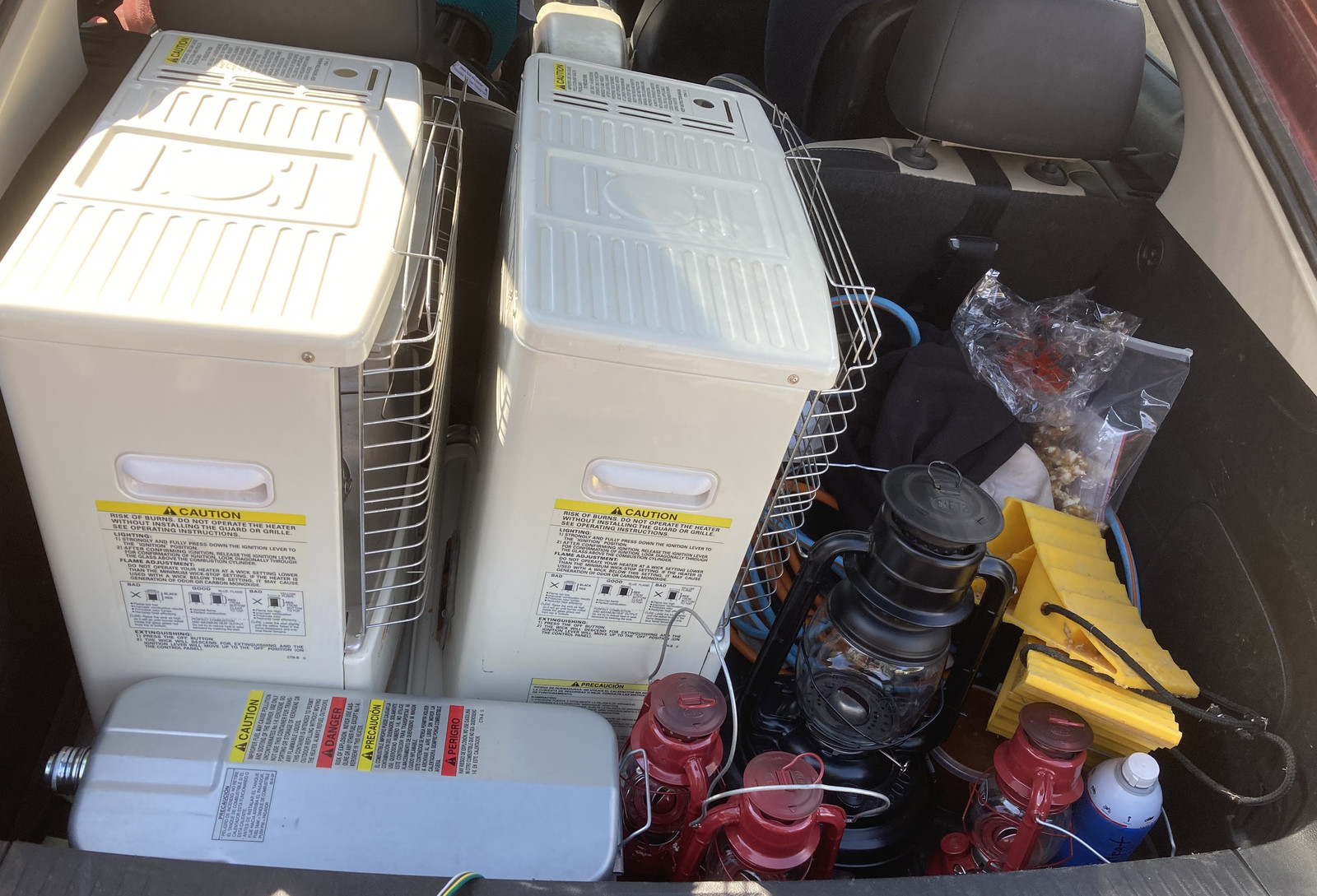Two weeks ago, I posted some details of my collection of kerosene lanterns, and this post continues along the same lines with more more detailed information about my lanterns, looking at light output, fuel burn, and some thermal images. I know what the spec sheets say - but I like to make my own numbers when I can. And here, I most certainly can!
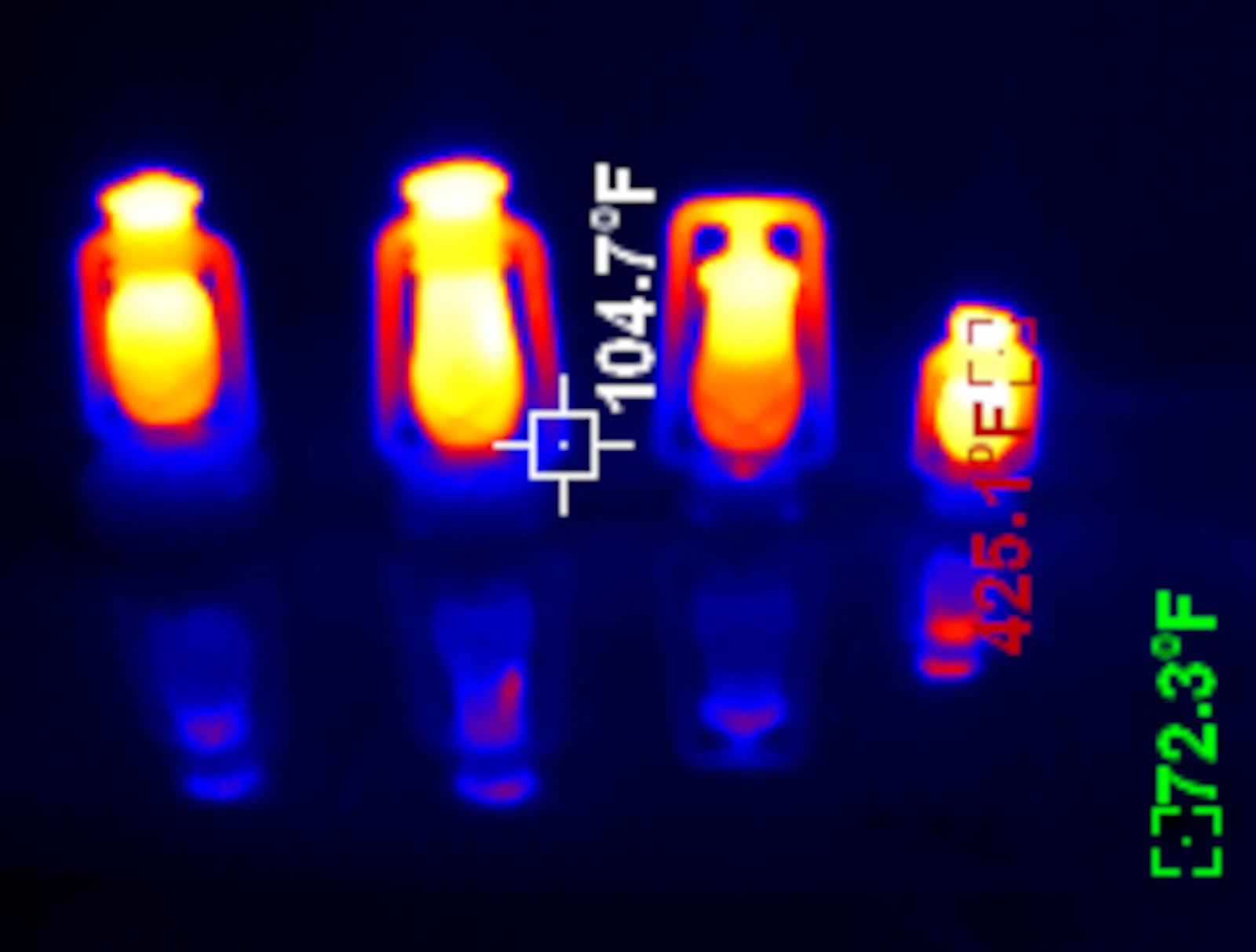
Globe Cleaning
It should be obvious, but a dirty globe is just wasting light. You can soot up a globe quickly if you’re not patient on startup, if you run the flame too high, or especially if you run the flame high outdoors - the wind will take a perfectly stable “indoors” flame and make it smoke. So while you don’t have to clean the globe every time you burn the lantern, you should clean it at least every few weeks until you get a feel for what it should look like and can optimize the cleaning schedule for your particular lantern.
For a quick cleaning, running a paper towel around the inside is fine (it’ll come up with more soot than you expect), and that’s good for getting a feel for how dirty things are - but when you really want to clean it, either use a sink, or spray some Windex in the globe and use a paper towel from both ends. Done properly, your globes should be almost perfectly clear! Not only do the lanterns let more light out this way, they do look a lot nicer sitting on a table with a freshly cleaned globe.
How it Burns
While any wick-based burner will burn the vaporized fuel off the wick, as opposed to burning the wick (ideally…), a cold blast lantern makes this process rather more clear than a typical candle. There’s a rather large gap between the wick and where combustion starts - at least when operating as intended. The flame will be much closer to the wick when starting with the globe lifted.
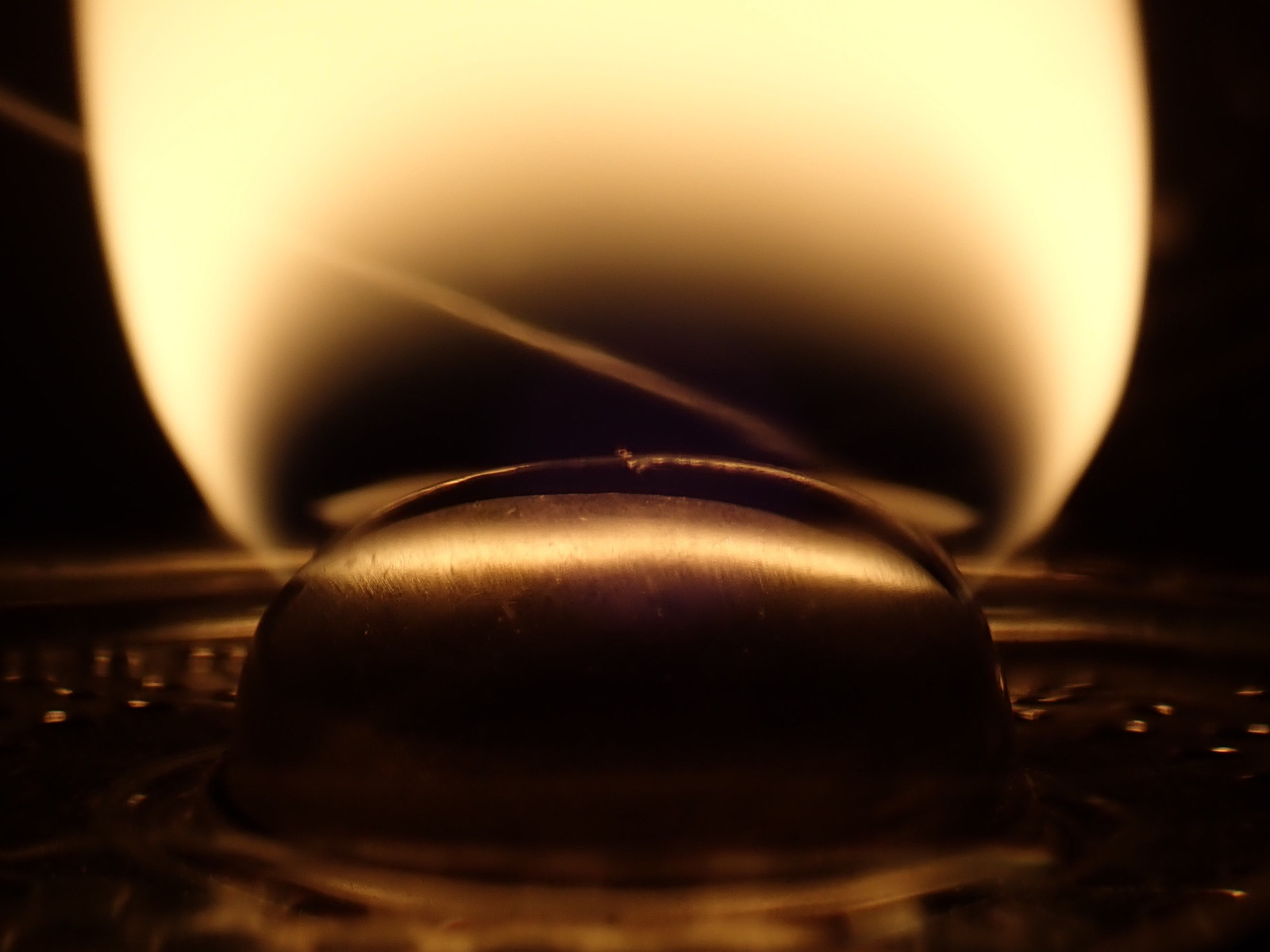
This brings to mind the obvious question: If the wick isn’t part of the combustion process, why do they occasionally have to be trimmed? The answer is that contamination builds up at the top - tars from natural kerosene, the red dye if you’re burning that fuel, or just whatever you get when kerosene is radiantly heated enough. This can turn into a crunchy layer that blocks the delivery of kerosene. Trimming the wick removes this layer. But, practically, if you’re burning Klean Heat, you shouldn’t have to trim the wick very often. I’ve never noticed a difference from trimming, and once I’m done playing with them for this post, I’ll probably just let the wicks run and see how long it takes before I notice an issue.
Flame Shape Comparisons
Most people assume a lantern will burn with a candle-like flame - but they don’t. They (ideally) burn with a far wider flame that puts as much of the flame area in the “hot, white, light emitting region” as possible. So, for each of my lanterns, I’ve taken some pictures of the flame in operation at two different levels - a medium flame, and the “maximum sustained flame” I can get out of them when warm without starting to get the trails of unburned material that lead to smoke. Despite that, all the lanterns sooted up the globes somewhat when I was doing the max flame fuel burn testing - there’s just no good reason to be running one up that high unless you need all the light possible. And, in 2022, the right answer there is probably a flashlight. You won’t harm the lantern at full flame, it’s just annoying to be cleaning the globe constantly.
The Blizzard has a generally triangular flame, and there is plenty of light coming out at the normal flame height, though there’s always room to turn it up. No, it doesn’t get orange turned up - that’s just an artifact of my camera’s auto-white-balance, which I didn’t think to disable for this set of photos. It’s still fairly white, though the top starts fading to orange.
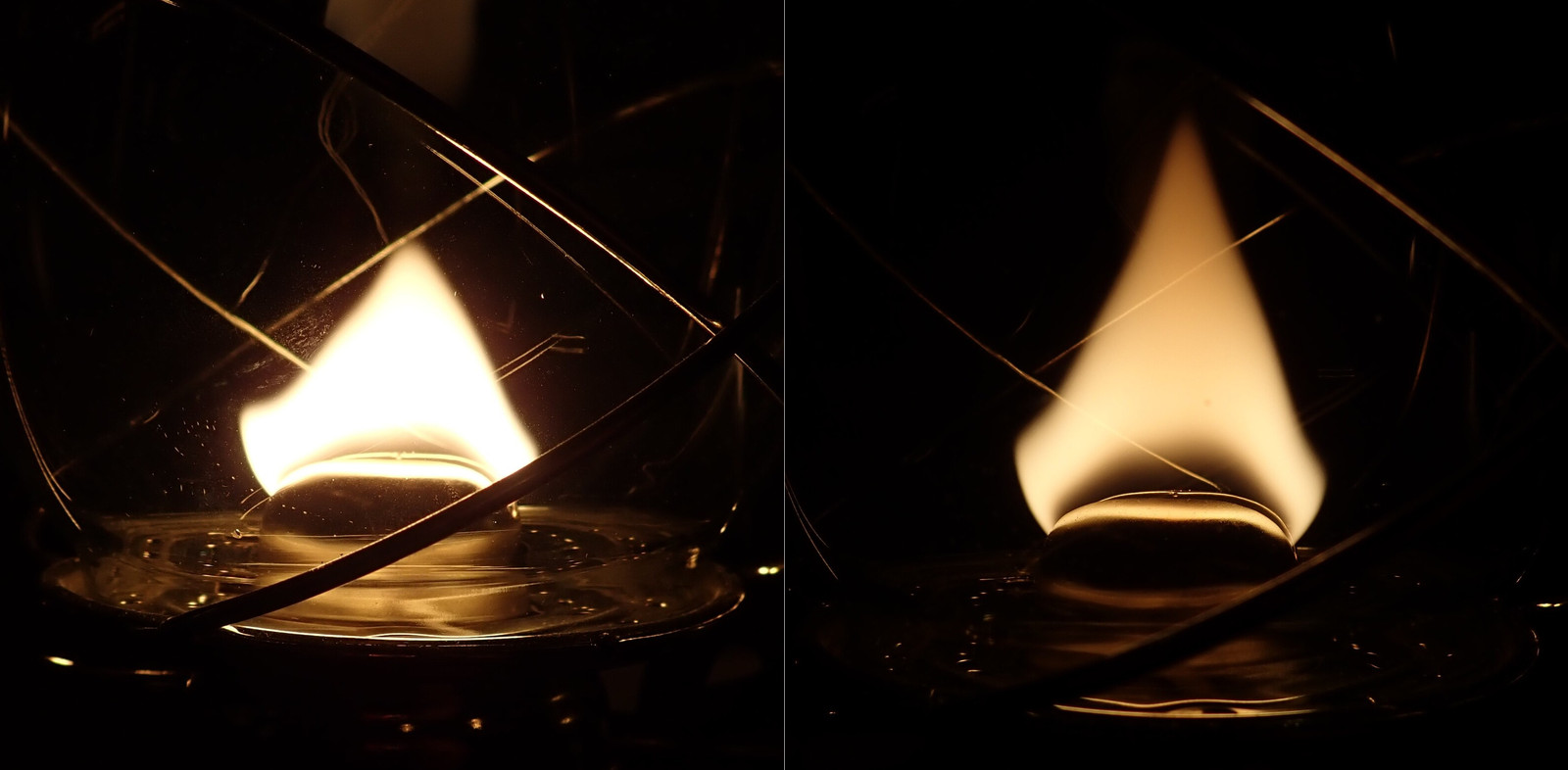
The Comet has a very large difference between a medium, reasonable flame, and really turned up - it can fill the full height of the globe before it starts smoking. The flame is quite close to the top of the lantern, and that will be obvious later on with the thermal images.
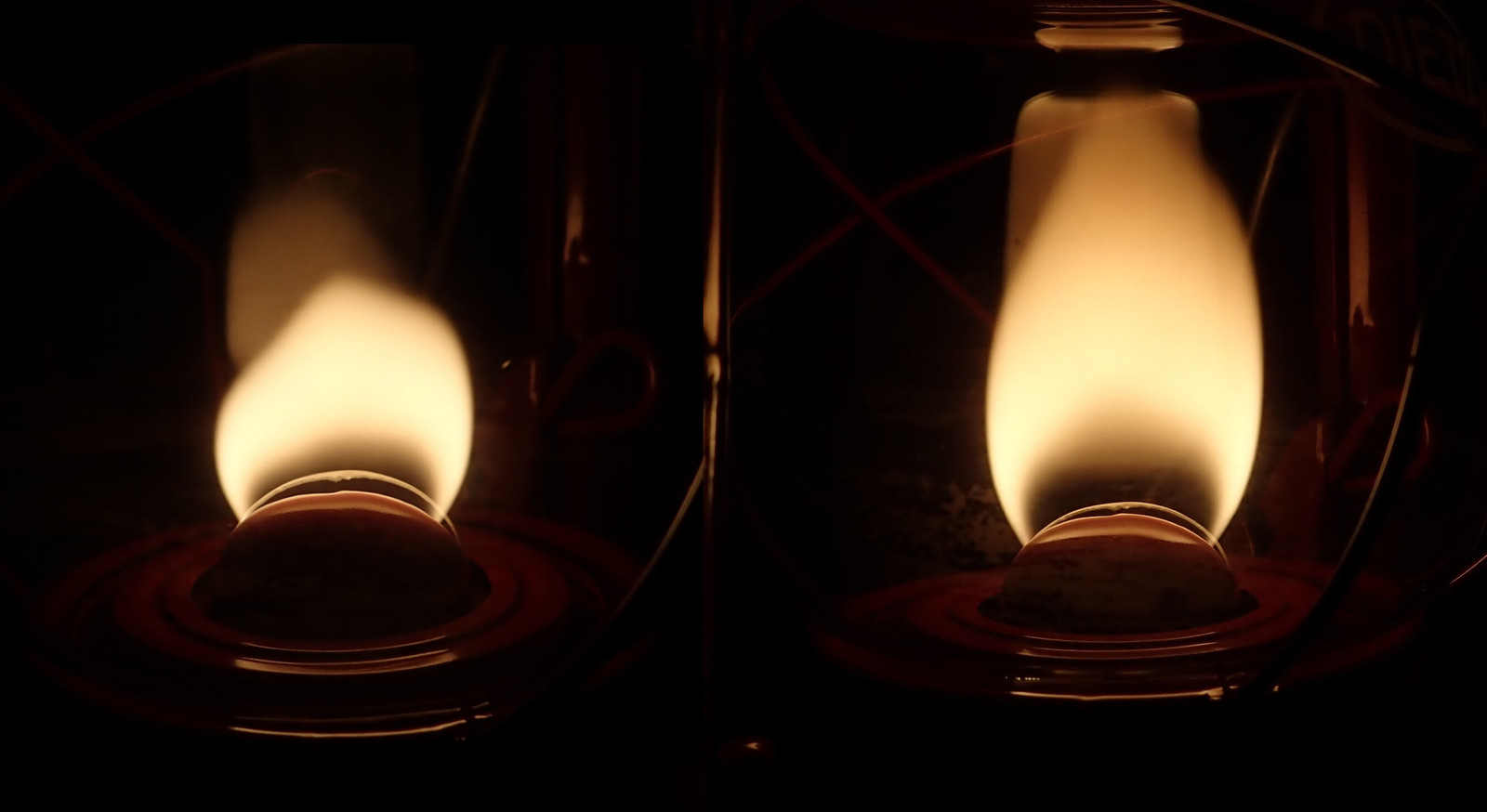
The Jupiter, meanwhile, doesn’t have a huge difference between a reasonable flame and the highest you can get it before it starts smoking. You can get more light out of it cranked up, but not by far - it doesn’t have the same sort of vertical flame reach of the Blizzard before starting to smoke.
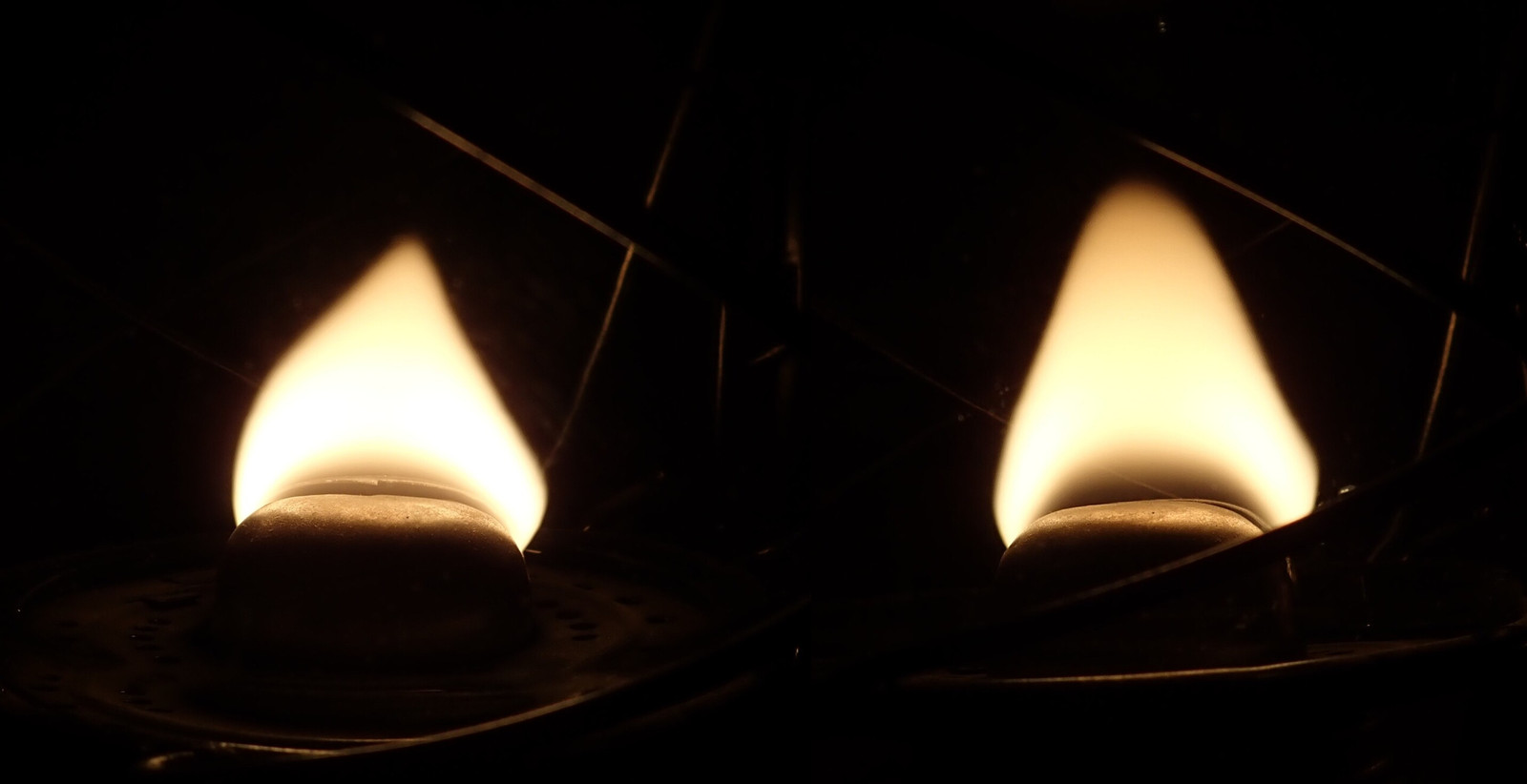
And the Monarch can really crank up the flame size before smoking, though only in dead calm conditions. A bit of air movement and it’ll start tossing out smoke from the sides of the flame. The Monarch, with the same flat cut wick as the rest, has a far wider flame - I’m not sure if this is a quirk of the 5/8” wick vs the 7/8” wick, or just something the hot blast type does. But the flame is noticeably wider. I’ve said it before, but it’s worth mentioning again that the flame dances a lot more on the Monarch - it doesn’t just park in one spot like the cold blast flames.
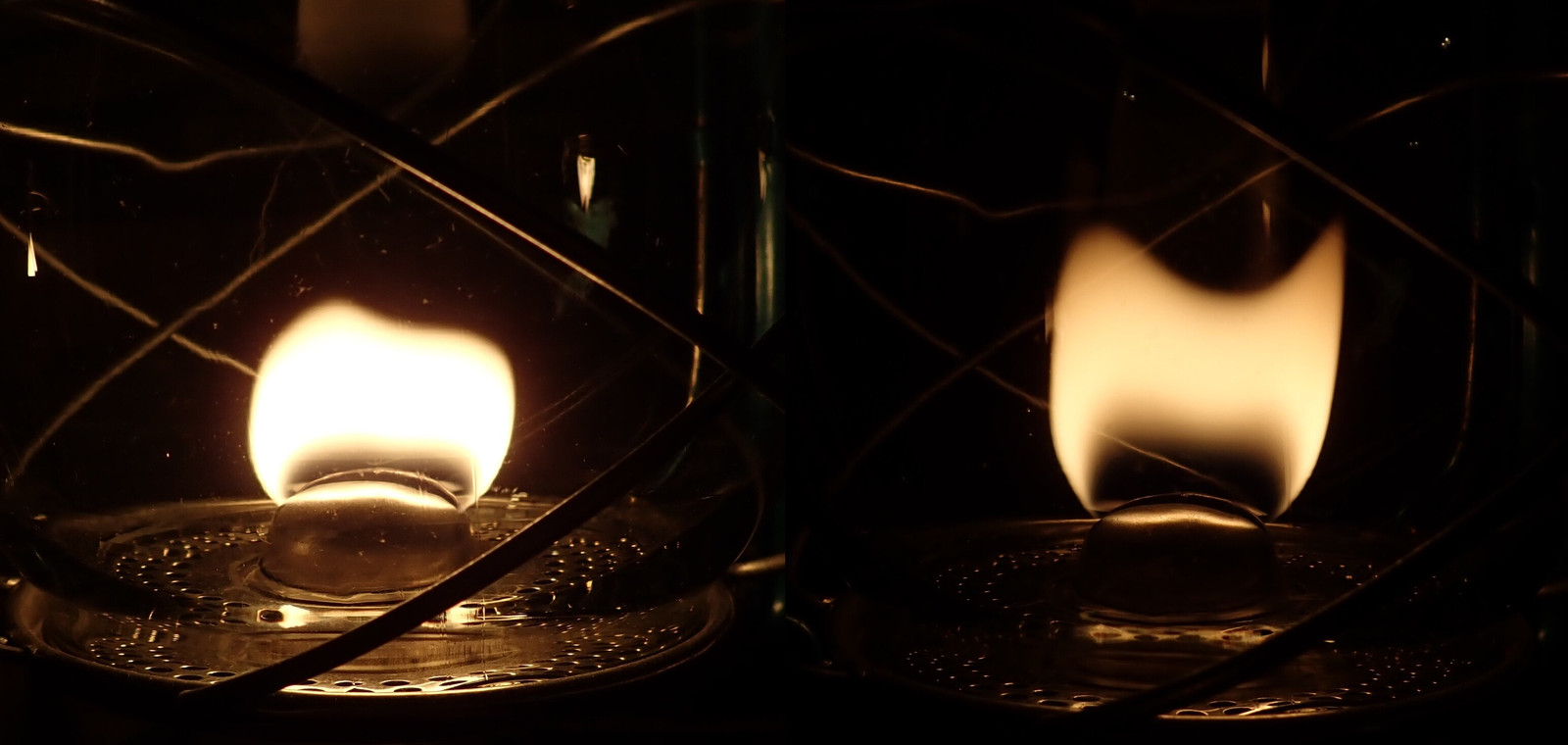
On the other hand… a dragon, curled up around a Comet, on top of a kerosene heater? Properly cute, and a very comfortable looking dragon!
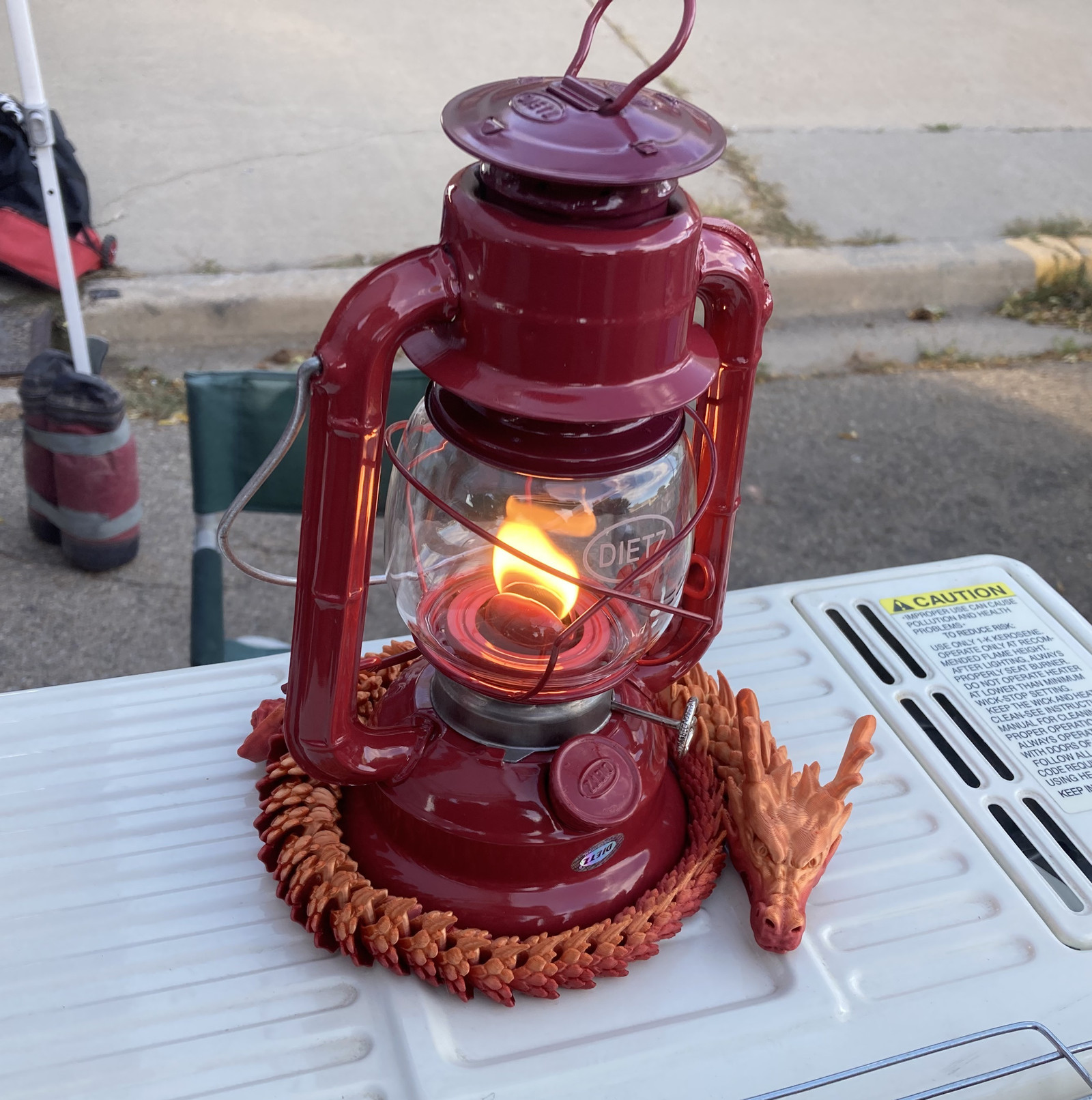
Reading Distance and Light Output
Kerosene lanterns don’t produce much light by modern standards, especially by comparison to high power LED bulbs that most of us use. But they do produce very useful amounts of light. I don’t have a direct way to measure candlepower, so I invented a somewhat subjective test that, at least, makes for good comparison between lanterns: How far away from the lantern you can read a particular book. Because I’m in the middle of the series, I’m using something out of Greer’s Weird of Hali series - a medium font size, and just a generally bog standard paper book.
My testing rig is simple enough: One lantern, burning at “maximum sustained brightness,” on a table in an otherwise dark house (without the moon shining in). Walk away from it until the text is just barely readable. Measure distance. It’s somewhat subjective, and I don’t expect your eyes to match mine, but I’ve used two different test subjects and averaged the results.
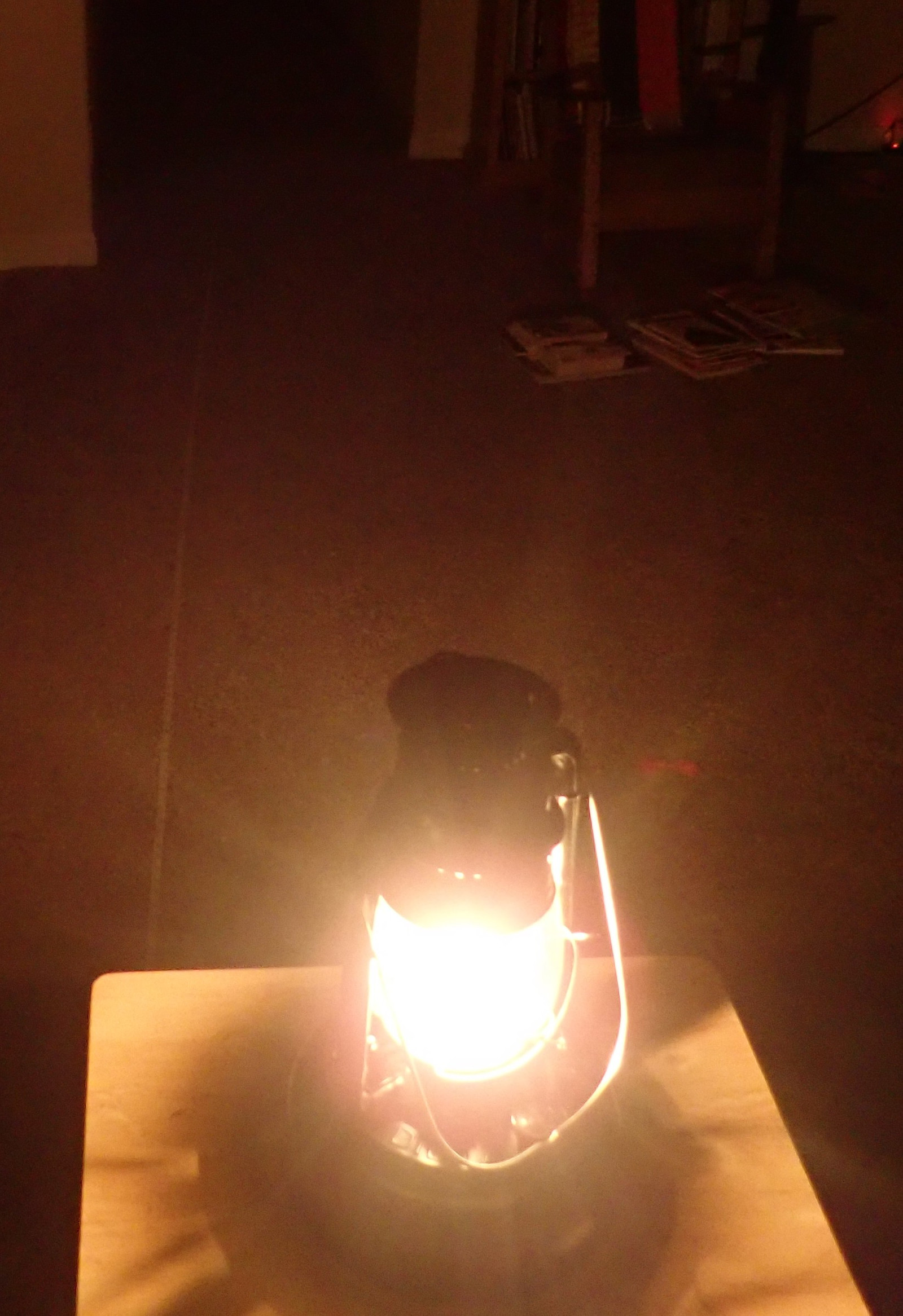
How far can you read? Quite far, really. The Blizzard is the brightest of the bunch, averaging 31 feet. Even the Comet managed almost 25 feet, though. There’s plenty of light coming off these lanterns, and up close, there’s no need to have them cranked up high to read by.
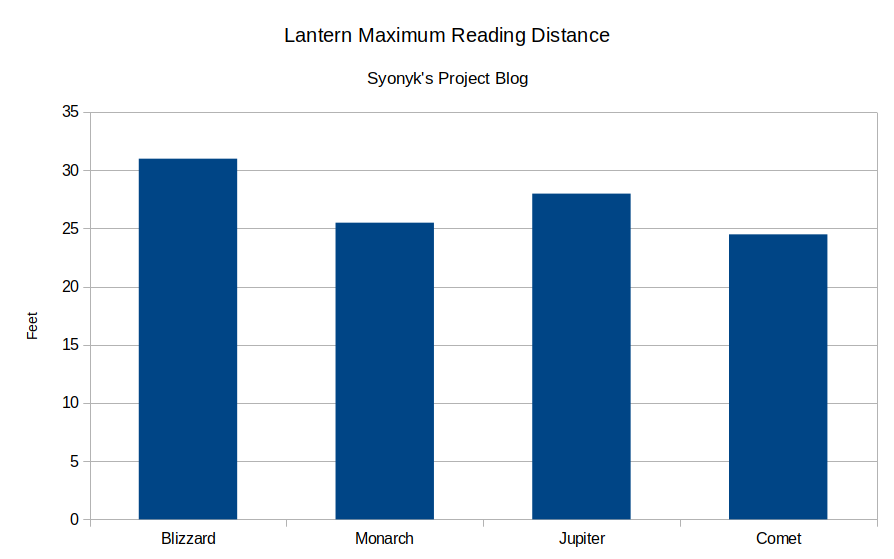
Fuel Burn
Just how much fuel do these lanterns burn in various flame states? It’s useful to know - but also somewhat hard to find more than the generic data from the spec sheets, all of which seem to have broadly similar number ranges. I have a decent scale, so I’ve set out to generate something closer to “real data from my lanterns.” I’m doing my tests at the same two settings I used above - “medium flame height,” and “running as hard as possible without smoking.” The tests are simple enough: I weigh the lantern, burn it with the specified flame setting for about 3 hours, and weight it afterwards. Kerosene has a specific gravity of around 0.78-0.82 g/cm^3 (0.81-0.85 oz/US fluid ounce), so I can do the math and generate some decently solid oz/hr measurements for fuel. If you’d like to convert these to heat, kerosene has 1050 BTU/fluid oz (135,000 BTU/gal). I’m not a science lab, so don’t treat my measurements as insanely high precision, but they should get you at least close with how the various lanterns consume fuel and emit heat. Despite having the same wick size, the Blizzard and Jupiter definitely consume fuel differently, and I’m happy to claim the tall globe makes the difference.
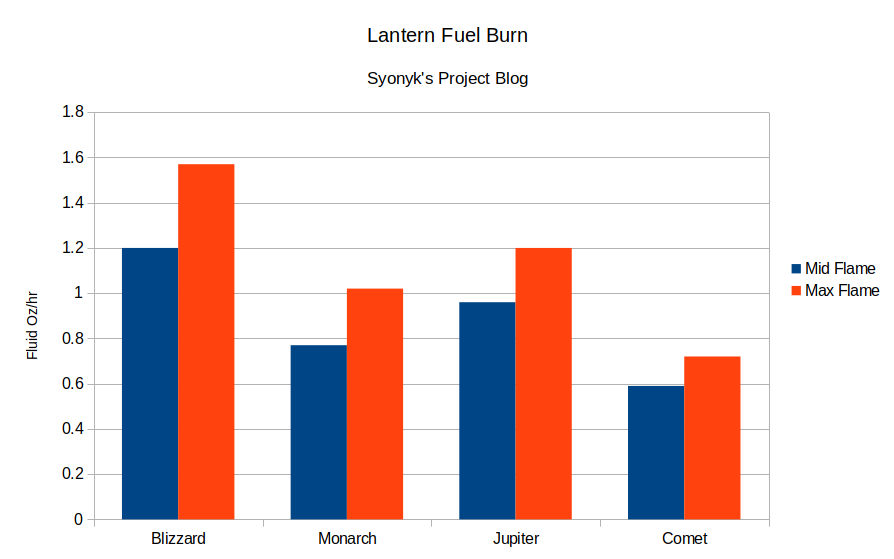
Fuel Comparisons
Lantern fuel is, annoyingly, harder than it used to be, and harder than it ought to be. This isn’t helped by the fact that the UK and US use the same word (“paraffin”) for different things. In the UK, it just means kerosene. In the US, it typically means some sort of waxy oil used in very small wick candles of the sort you see floating in bowls at fancy restaurants. They’re not the same, and they certainly don’t burn the same.
When comparing fuels, it can be hard to see real differences unless you’re A/B testing things right next to each other. Fortunately, there are some cute, cheap lanterns perfectly suited to doing this sort of thing - the Comets!
Someone on my forum recently did some testing between Klean Heat and “ISOPAR M” - commonly sold as a lantern fuel.
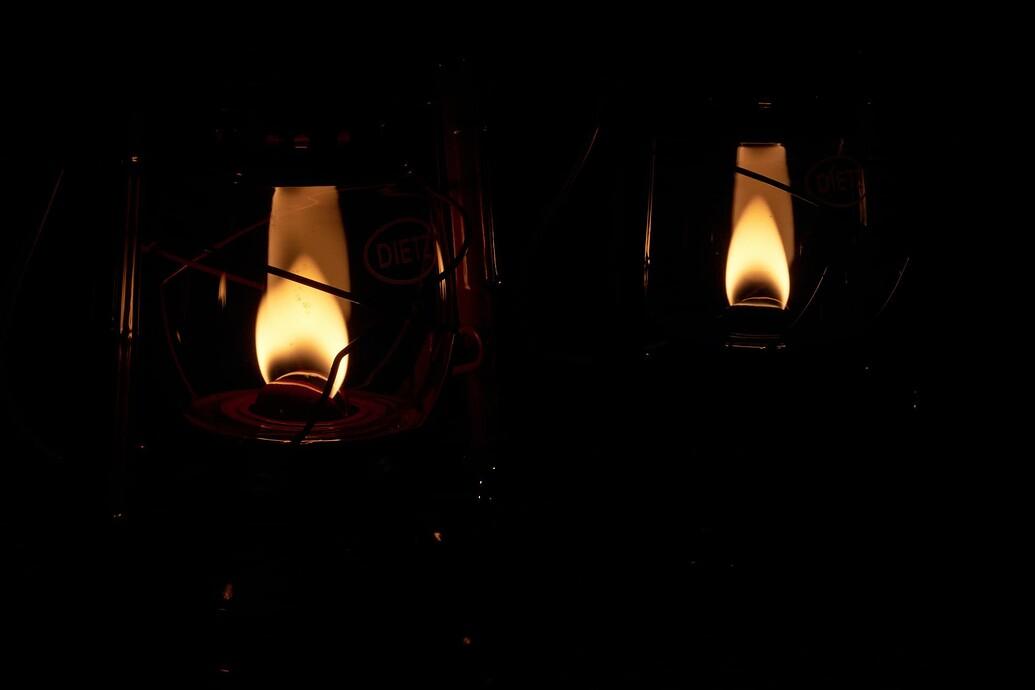
Results, unfortunately, were conclusive: Even with the small wick of the Comet, the non-kerosene fuel just didn’t burn well, had a smaller flame, and didn’t feed well enough to avoid scorching the wick. So stick to kerosene or Klean Heat for flat wick lanterns.
Between those two, if you can burn Klean Heat indoors, it’s the way to go. There’s no light difference I’ve seen between that and 1K, but the 1K kerosene will stink a bit more while burning. Again, avoid the red dye stuff unless you really like trimming your wicks.
Wick Trimming
Because I can’t find much beyond the basics. I’ve decided to play around with some wick trimming for the purposes of showing what it does to the flame. For a small lantern (the Comet), this won’t do much, but on a large lantern, you can have a very real impact on the flame shape if you care to do something weird. Should you do this for regular use? Almost certainly not. But you could.
I’ve tried a number of different ways of trimming wicks, and while a good sharp pair of scissors works well, a nice sharp set of snips works even better - and is somewhat less likely to smoosh all the fibers over to one side. You can find these at any hardware store, and I’ll suggest that you should probably keep your lantern set away from others - mangling them on wire and random other metal will not improve their ability to trim a wick.
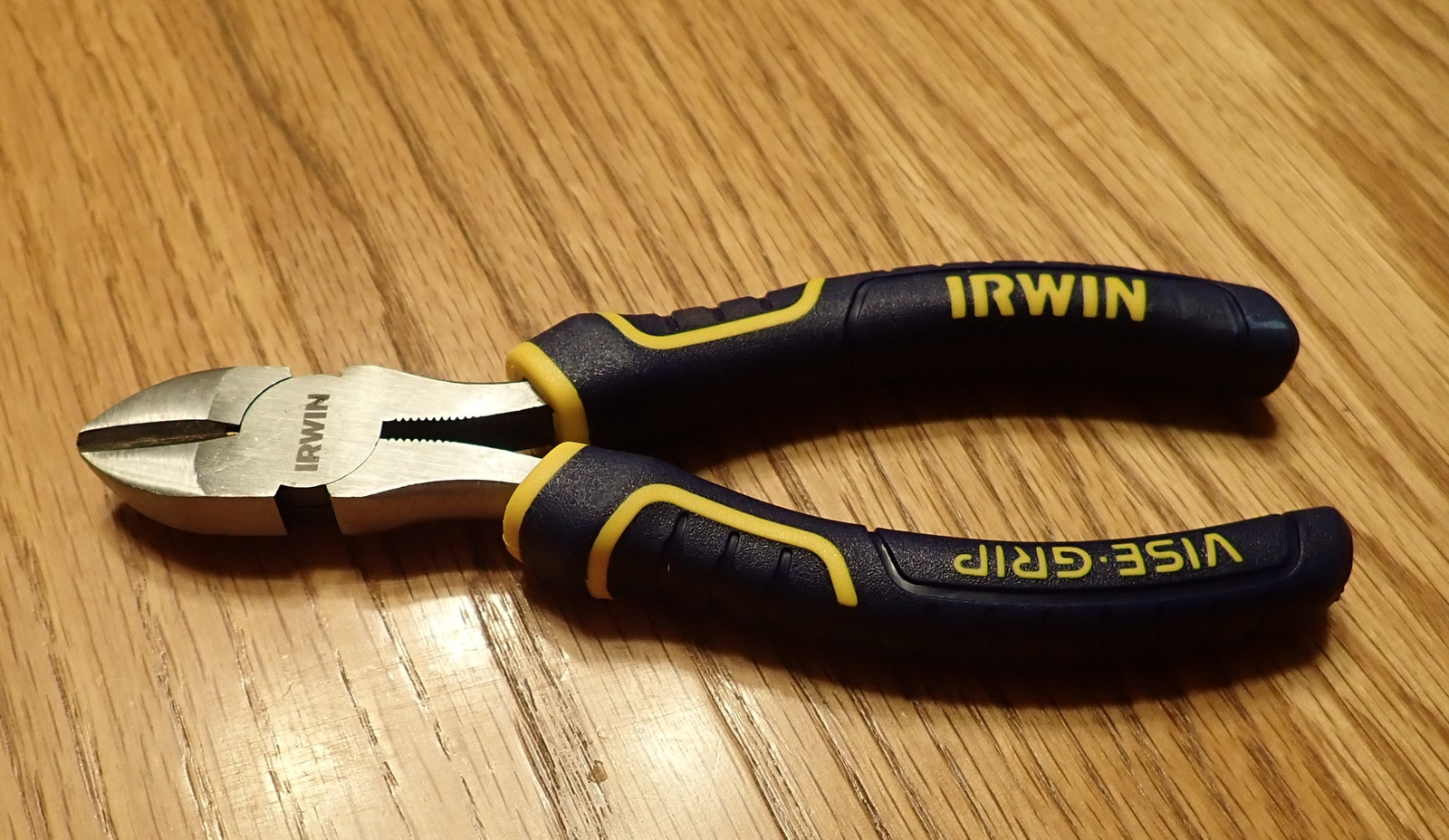
There’s no need to actually remove the burner from the lantern to trim the wick. You can do everything you need on almost all the lantern designs with the burner in the font (which means less mess). Pulling the wick out will drip kerosene everywhere, so do it outside - but, again, there’s just no reason to. Remove the globe, flip the base plate out of the way, and twist off the air director. This leaves you staring at the burner. Twist a bit of wick up, and not only do you have a nice flat surface to clip against, it’s not going to make a big mess. A bit of paper towel for the cut wick (which is saturated in kerosene) is fine.
Take a look around while you’re here - if you’ve used a lantern outside, there’s a decent chance you’ll find assorted dead bugs down here. They quite like the lanterns.
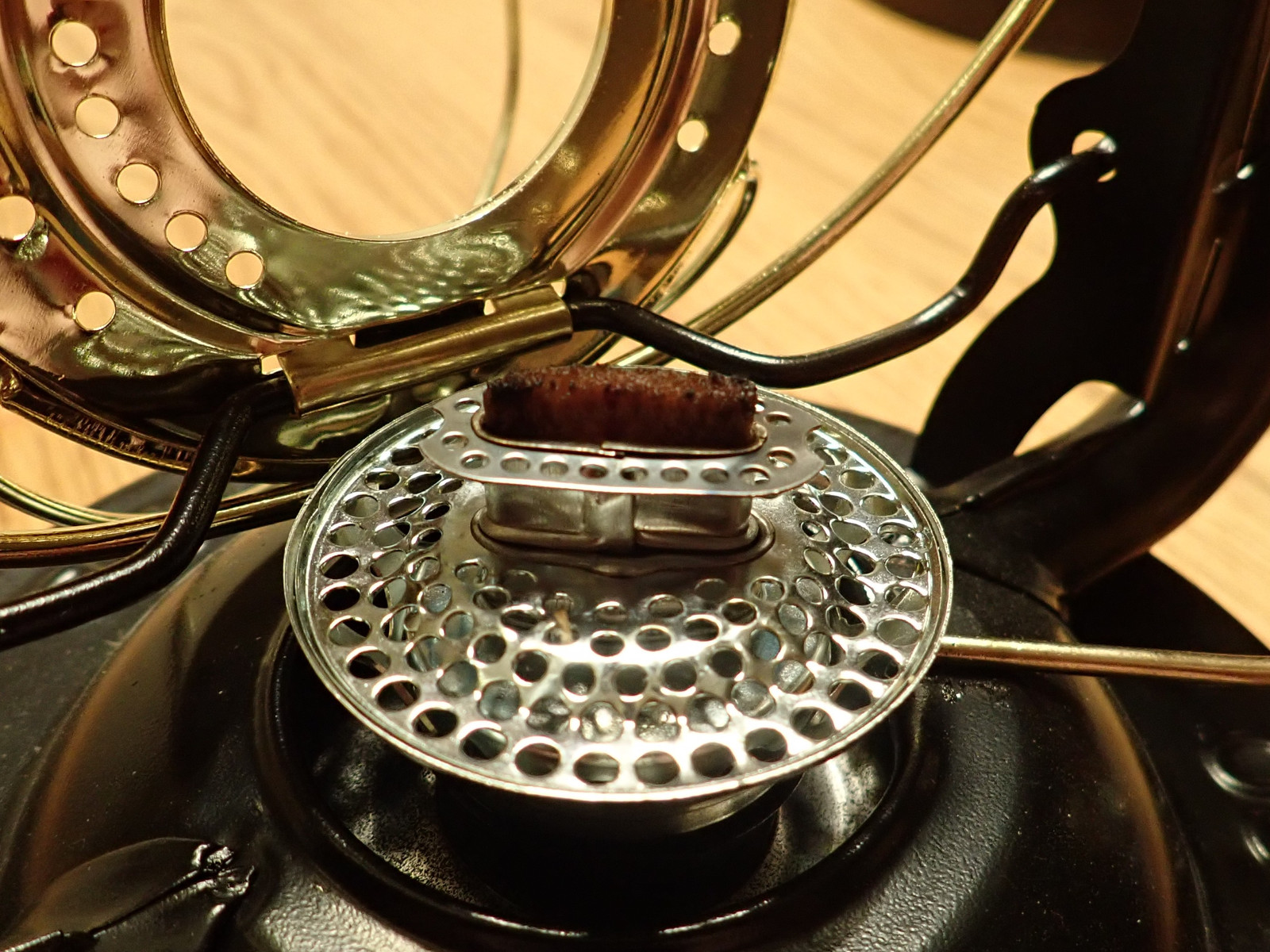
Your goal is simple: An even cut across the wick, level with the burner. You can do it in one large cut, or several smaller ones with some cleanup. The burner will rotate if needed to make your life easier.
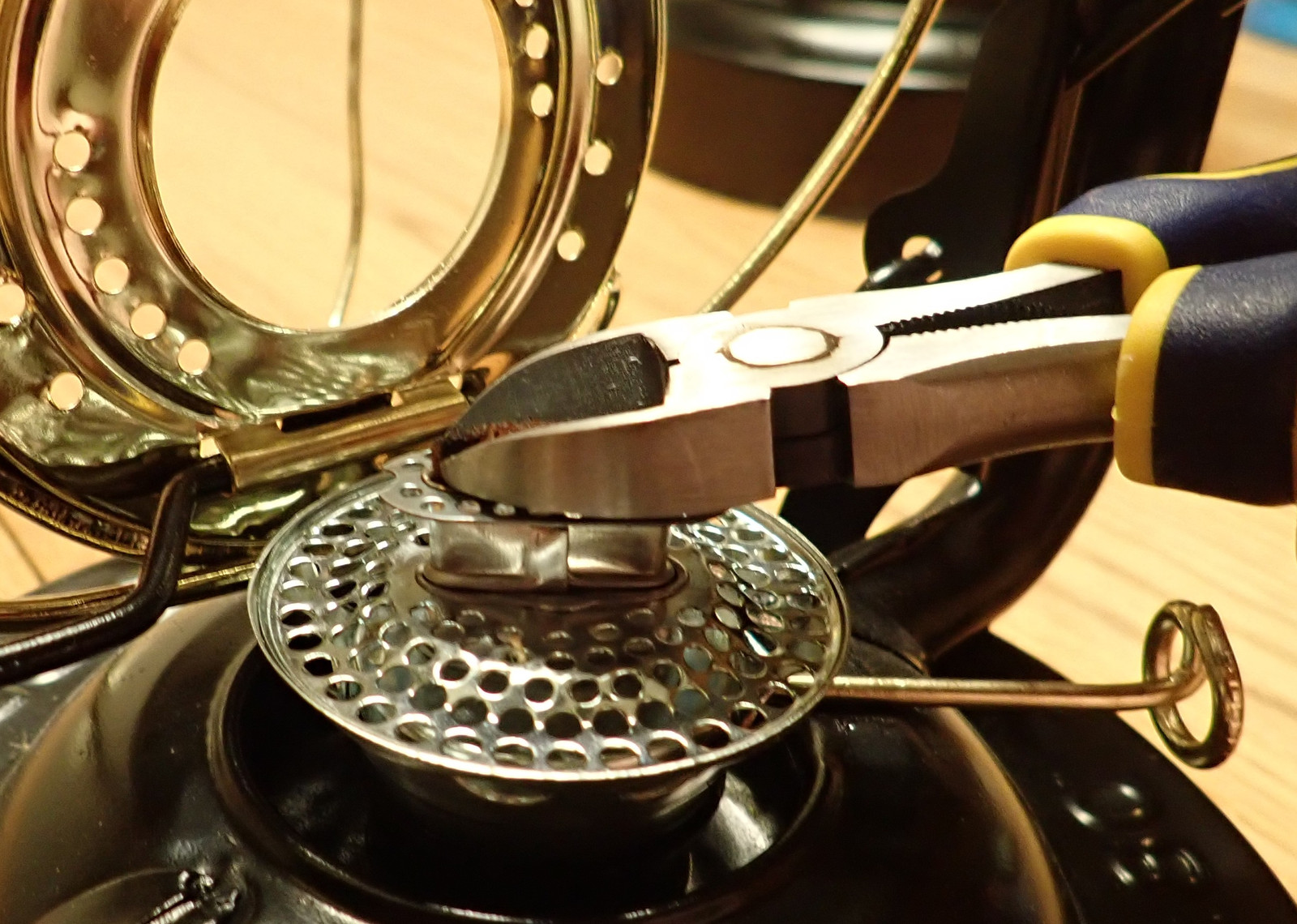
It should look roughly like this when you’re done. The left side could use a bit of touching up, but something like this is the goal - a smooth, even cut across the top. Clean up any fuzz, and see how it burns in your lantern. This process can take a while if you really want to fine tune a wick because you won’t see how the wick burns fully until the lantern is warmed up, and then it has to cool before you can tweak things. It’s not a bad way to spend an evening, though!
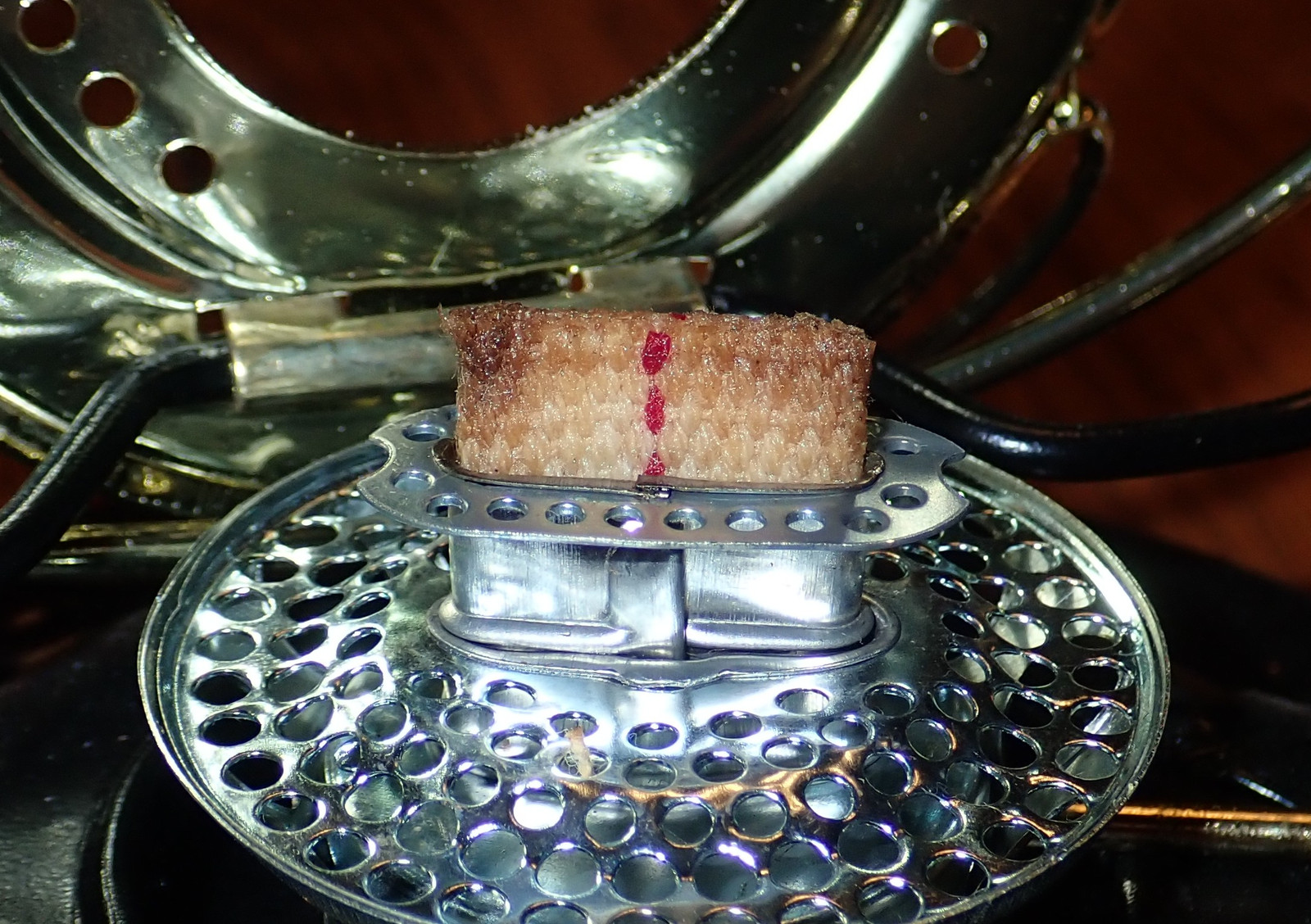
The shape of the wick will impact the shape of the flame very drastically. If you have “weird spots” in the flame, go look under that spot on the wick and you’ll almost always find your problem. Even a bit of fluff can impact how it burns. Here, I’ve trimmed down the sides a bit to narrow the flame.
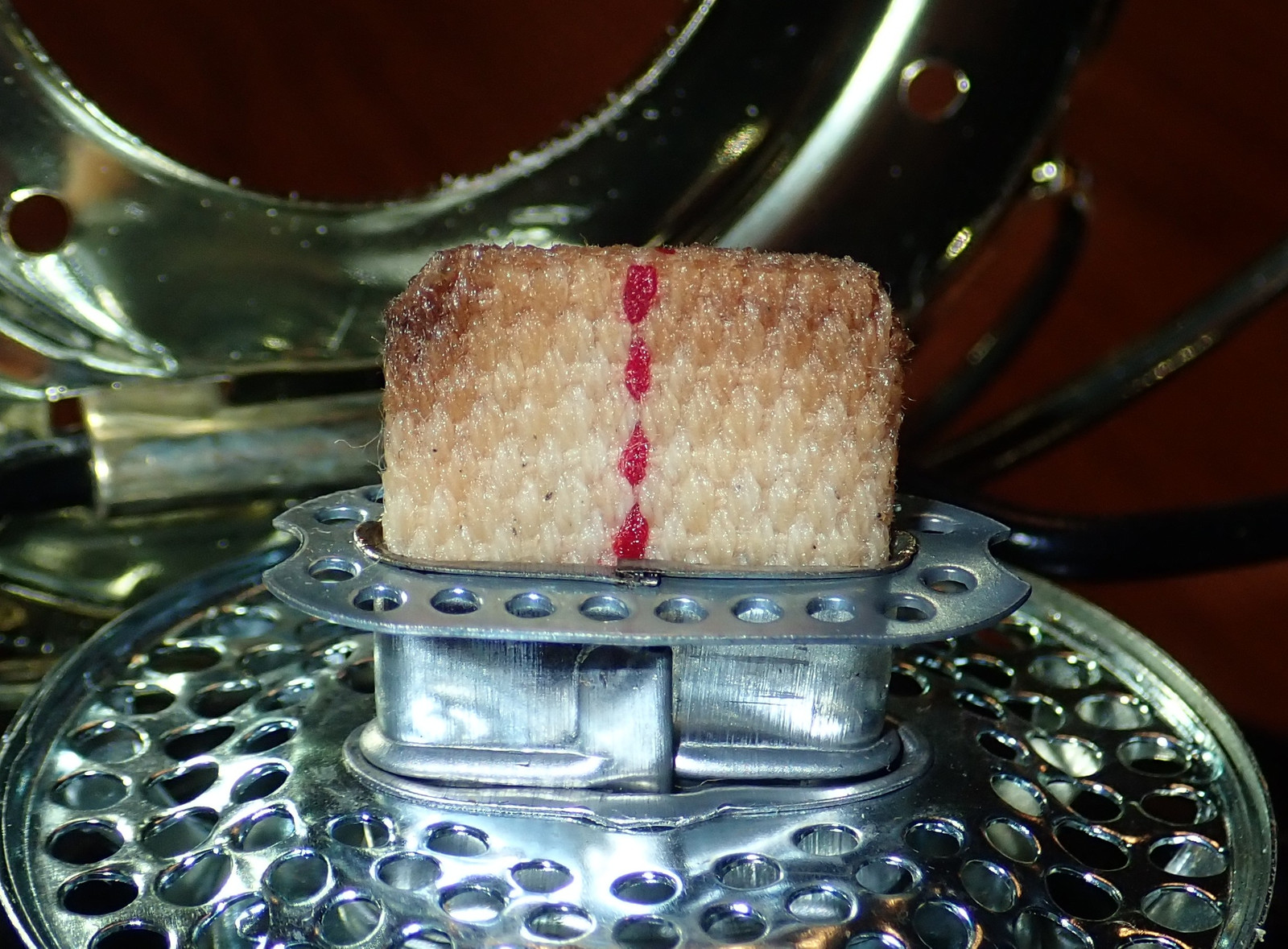
The result, once warmed up, is a somewhat narrower flame than normal. It looks good, but it does put out a bit less light than the wider flame that a “flat cut” gives. Also, if you get some weird flaring on the sides as the lantern warms up, let it burn for a bit before immediately trimming the wick. I’ve had a lantern that would shoot side horns for a bit after raising the wick, and then sort things out after a 15 seconds or so and burn reasonably. For maximum light, you want a wide flame.
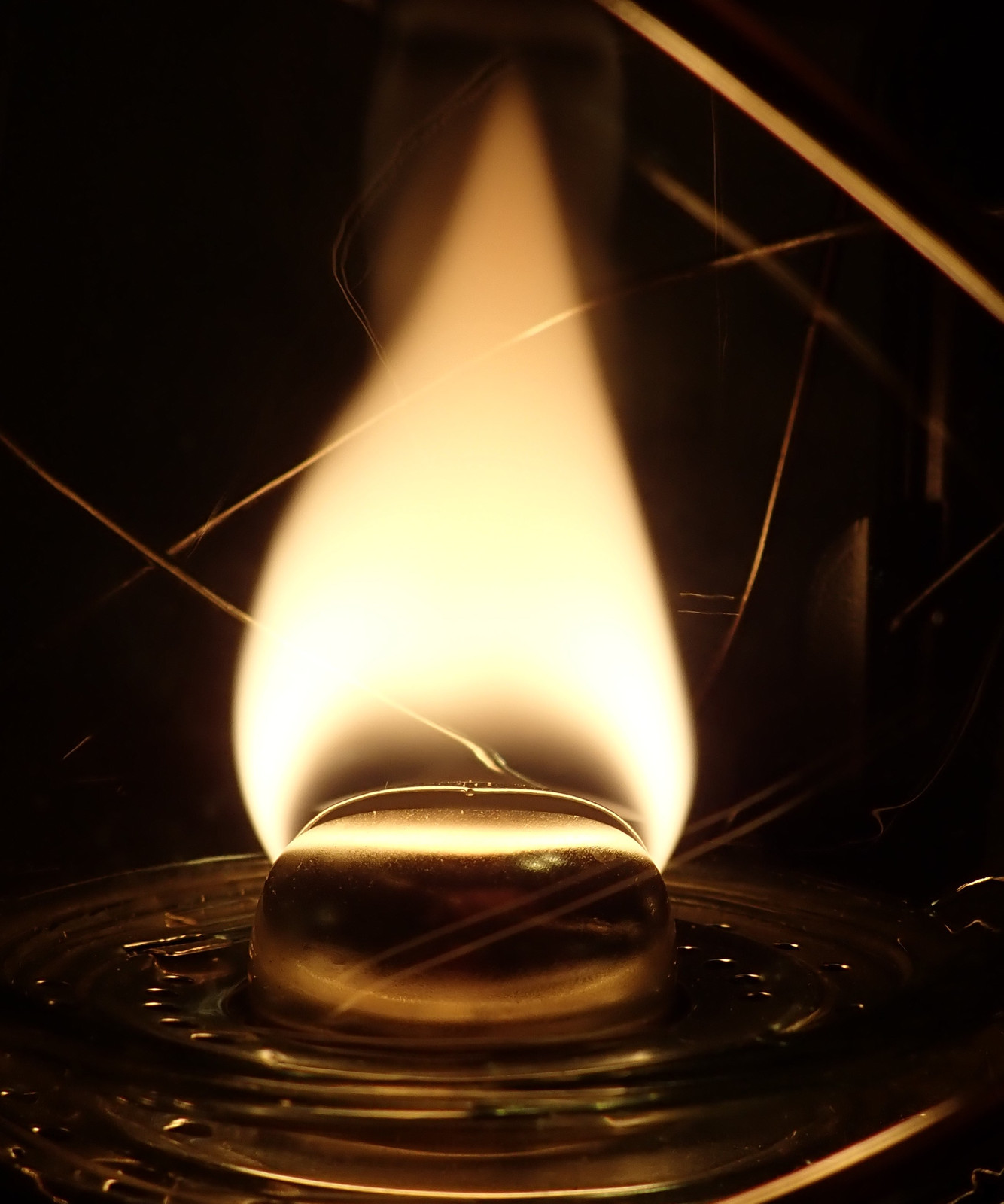
My Monarch, meanwhile, prefers a straight cut. This is a narrower wick, so it’s a bit easier to get a single cut across it.
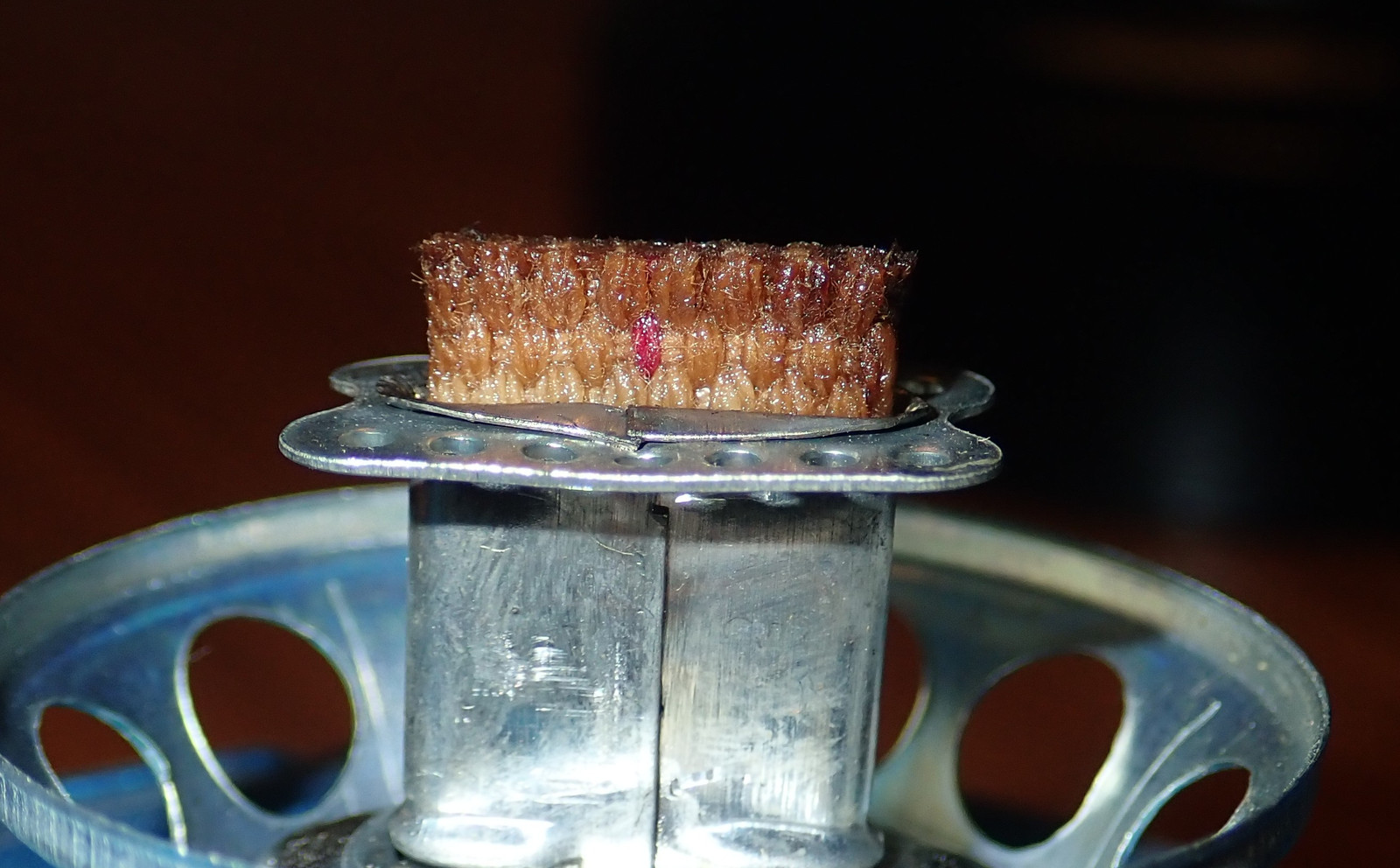
I can only assume the left is a touch longer than the right side based on the flame, but this is an active enough flame (the top flickers and dances) that I don’t find it worth the effort to really fine tune it much more.
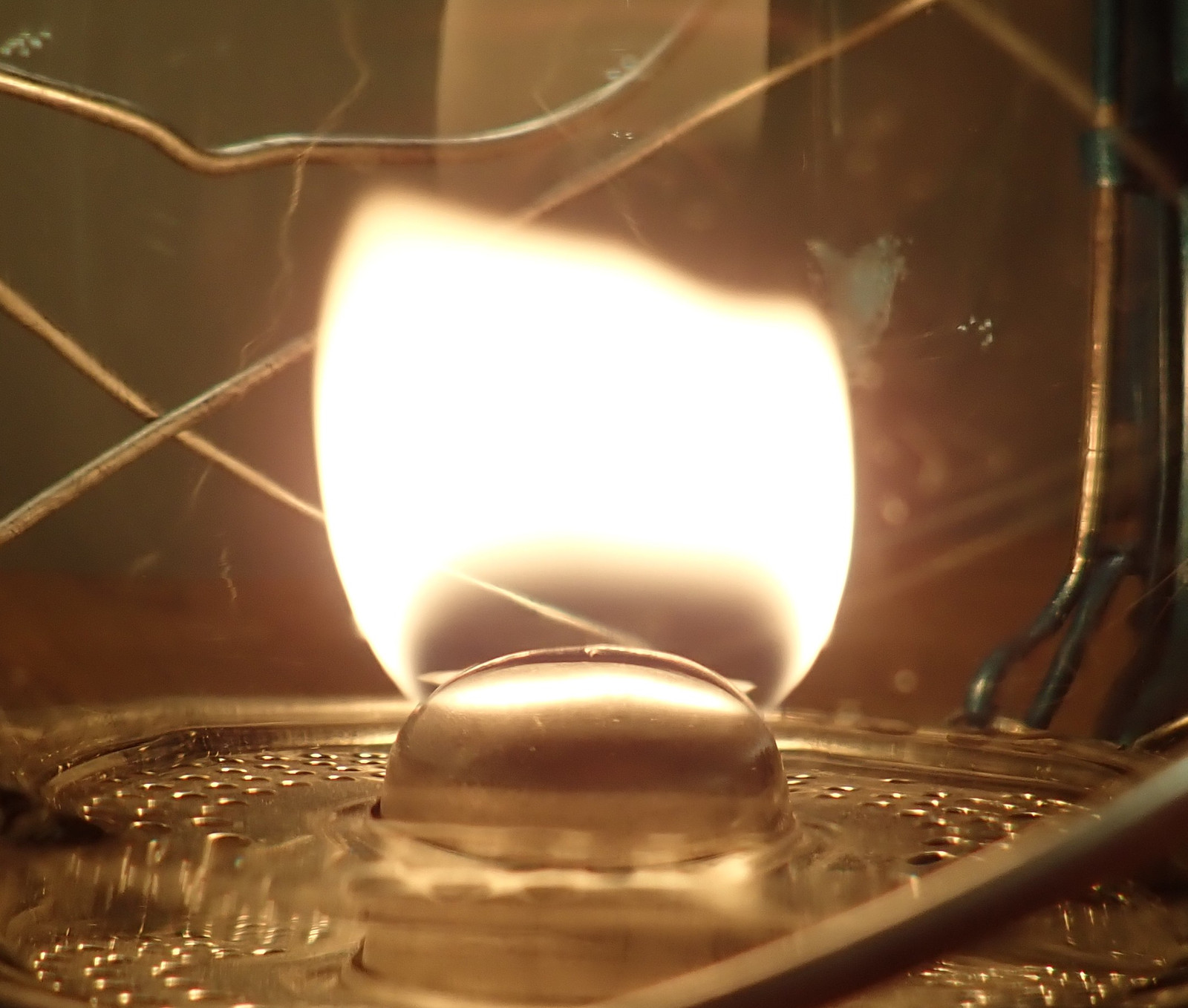
But what if you want your flame to do something weird? Here, I’ve cut the center of the Blizzard wick down. How’s it burn?
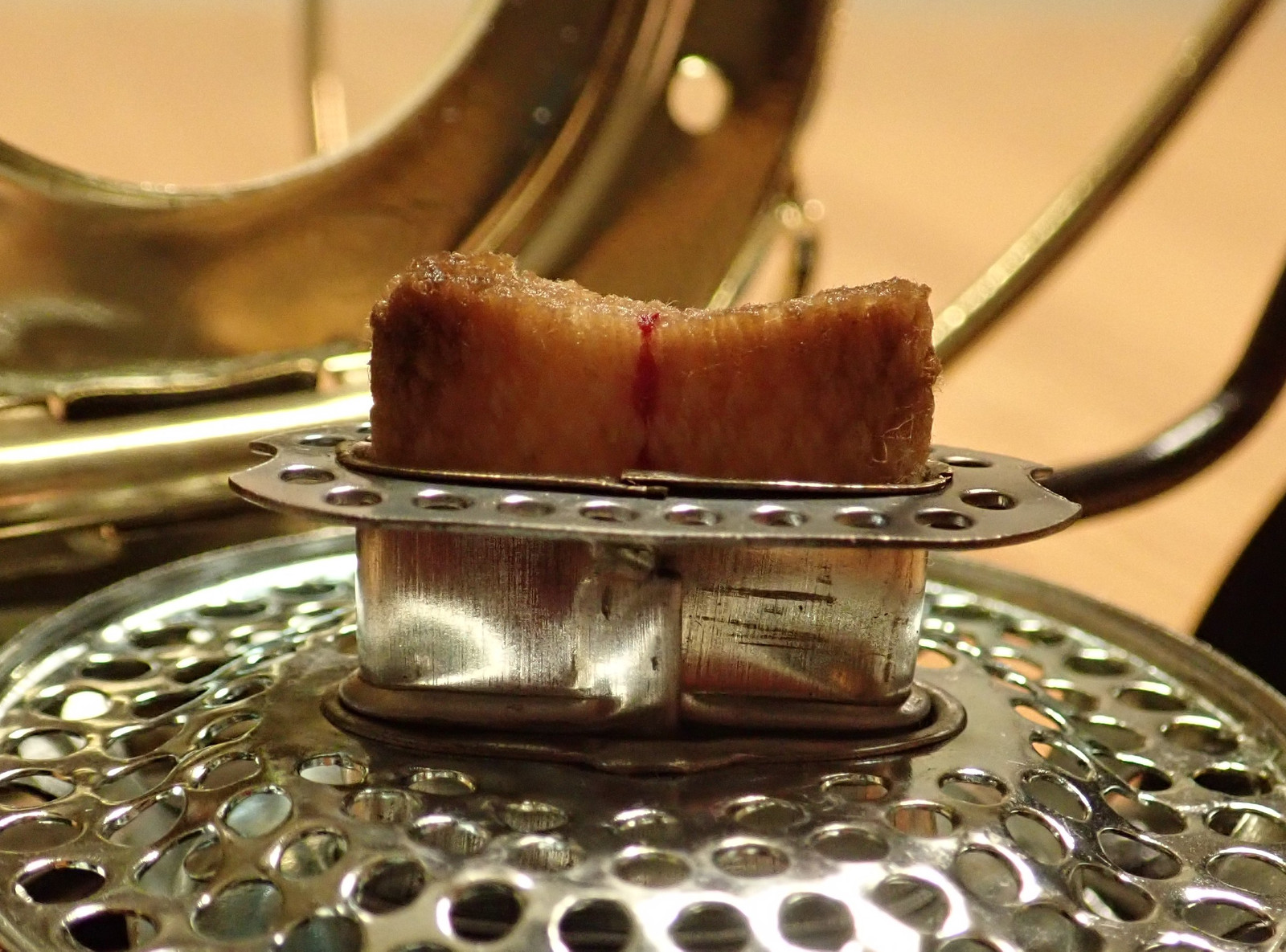
Well… you know how I said the flame shape reflects the wick shape? Here you go!
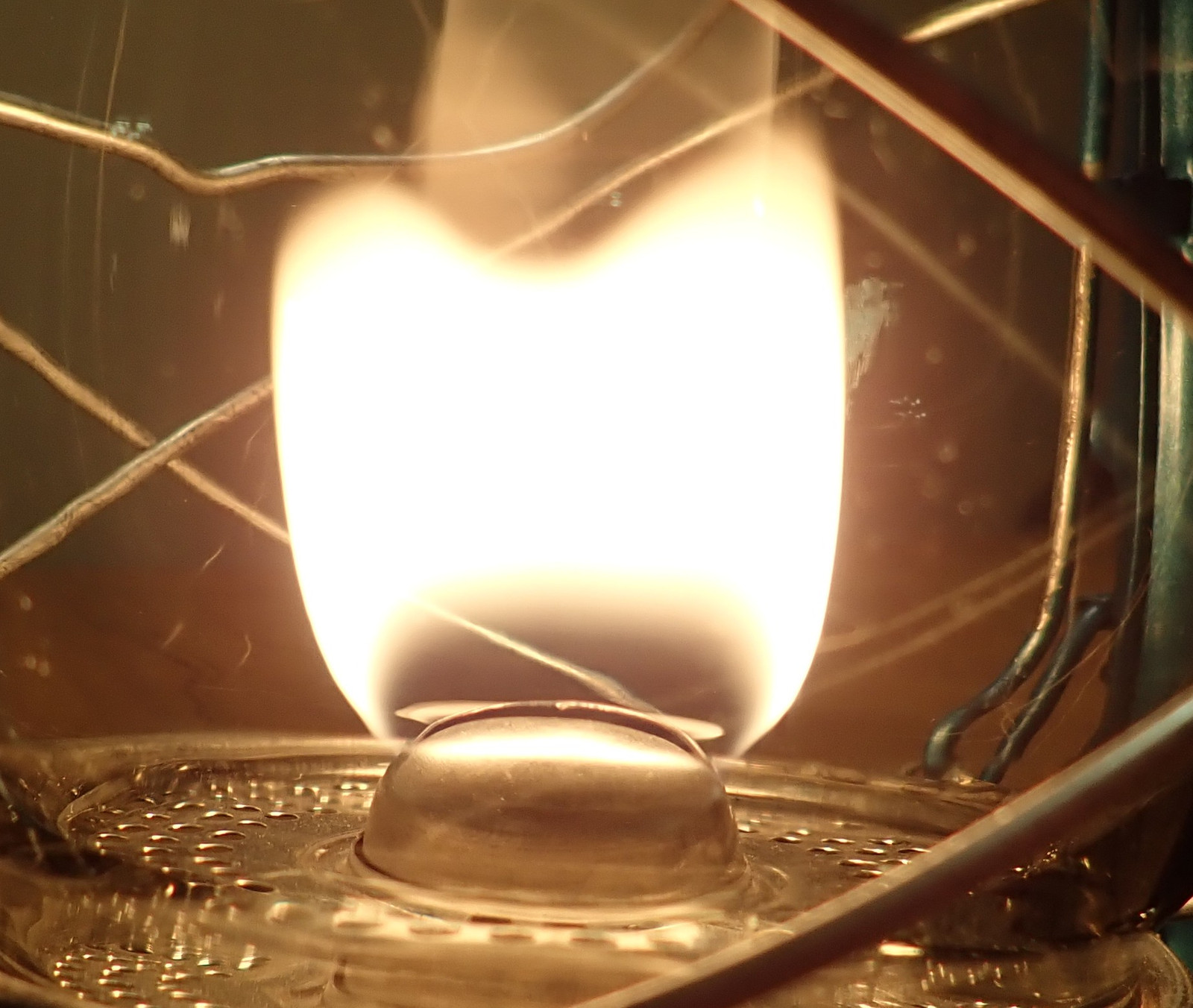
If you really wanted maximum light out of the lantern, this isn’t a half bad path to go down - it creates a very wide flame, with a lot of light emitting surface. But I also found it exceedingly unstable - any gust at all and it dances off, with a horn on one side that produces a lot of smoke. Neat, useful for a demonstration of wick cutting, but also not something I’m going to use regularly. I went right back to a flat cut wick with just a touch off the corners for the Blizzard after this.
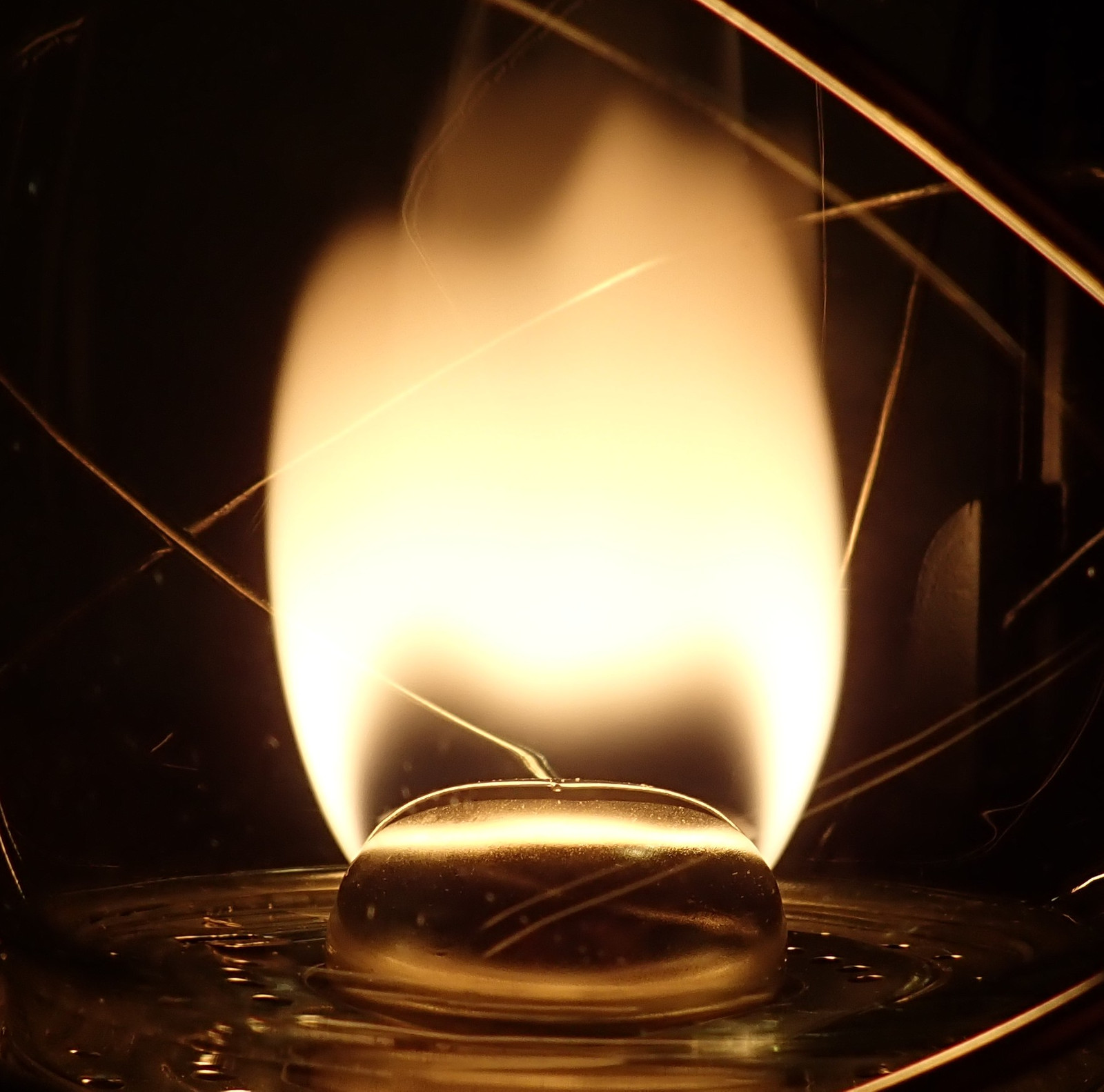
Thermal Images of Lanterns
I really hate to make some inane comment like “Have thermal imager, will thermal image,” but… well, I have a thermal imager. And I point it at just about everything. Including lanterns.
These shots are from the “high flame” fuel burn test - about 75F inside, and the flames as high as I could reasonably get them without the lanterns smoking too badly. This represents something of an upper and on the temperatures one is likely to see on the lanterns, with “normal running temperatures” of a sane flame being somewhat lower.
From left to right: Jupiter, Blizzard, Monarch, Comet.
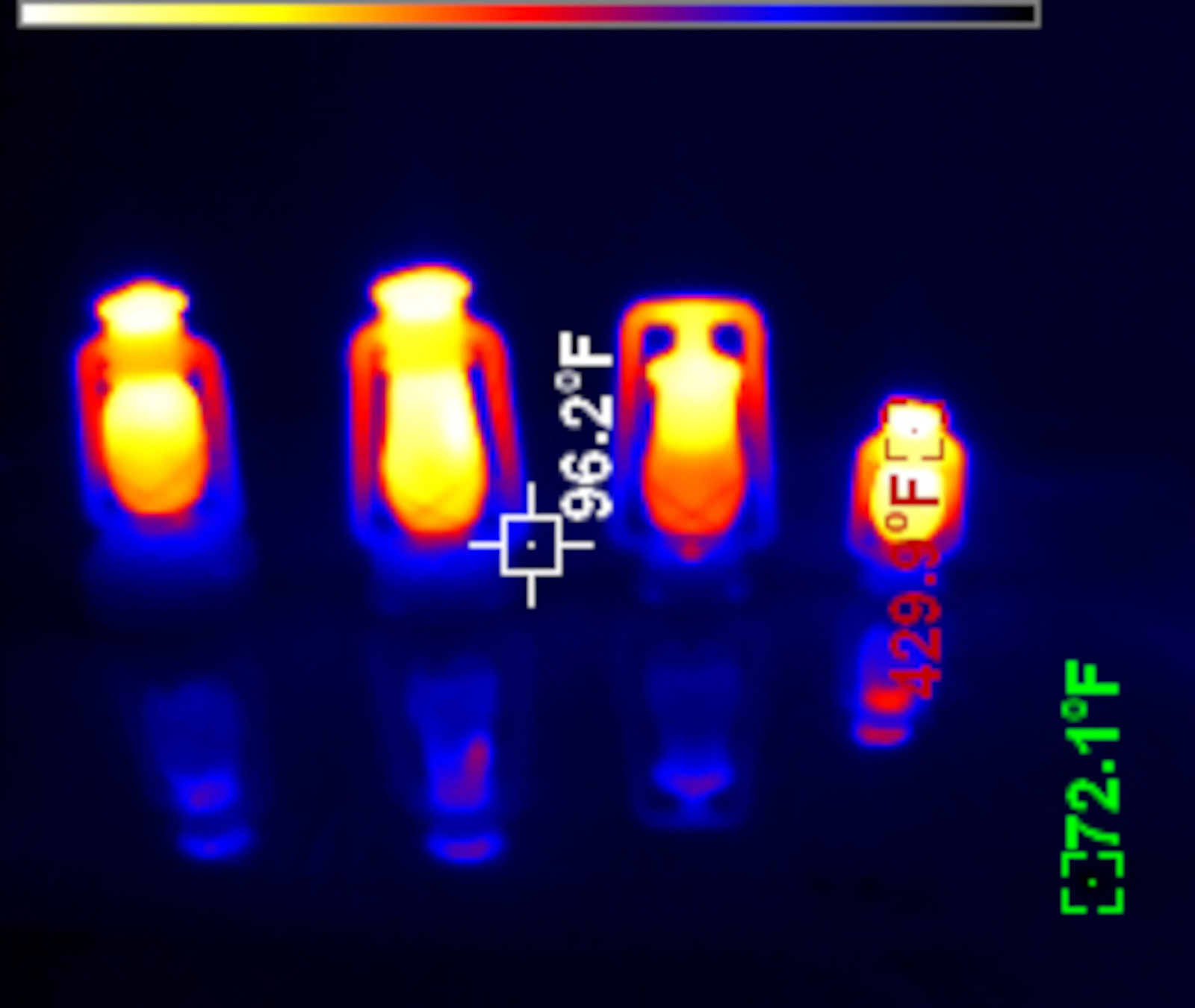
The Jupiter is on the large side of cold blast lanterns, and shows the same general pattern one sees in all of them. The globe is hot (I left emissivity at 0.95 so it’s probably not 100% accurate here, but I assure you, the globe gets hot in operation), the “chimney stack” in the center is hot, the top is very hot, and the tubes down the side are reasonably cool. You can move the lantern by them, though you should probably use the actual bail across the top for even lifting. It’s also worth mentioning that the fuel font is quite cool - barely warmer than ambient down at the bottom. Running properly, you don’t get a lot of heat into the fuel.
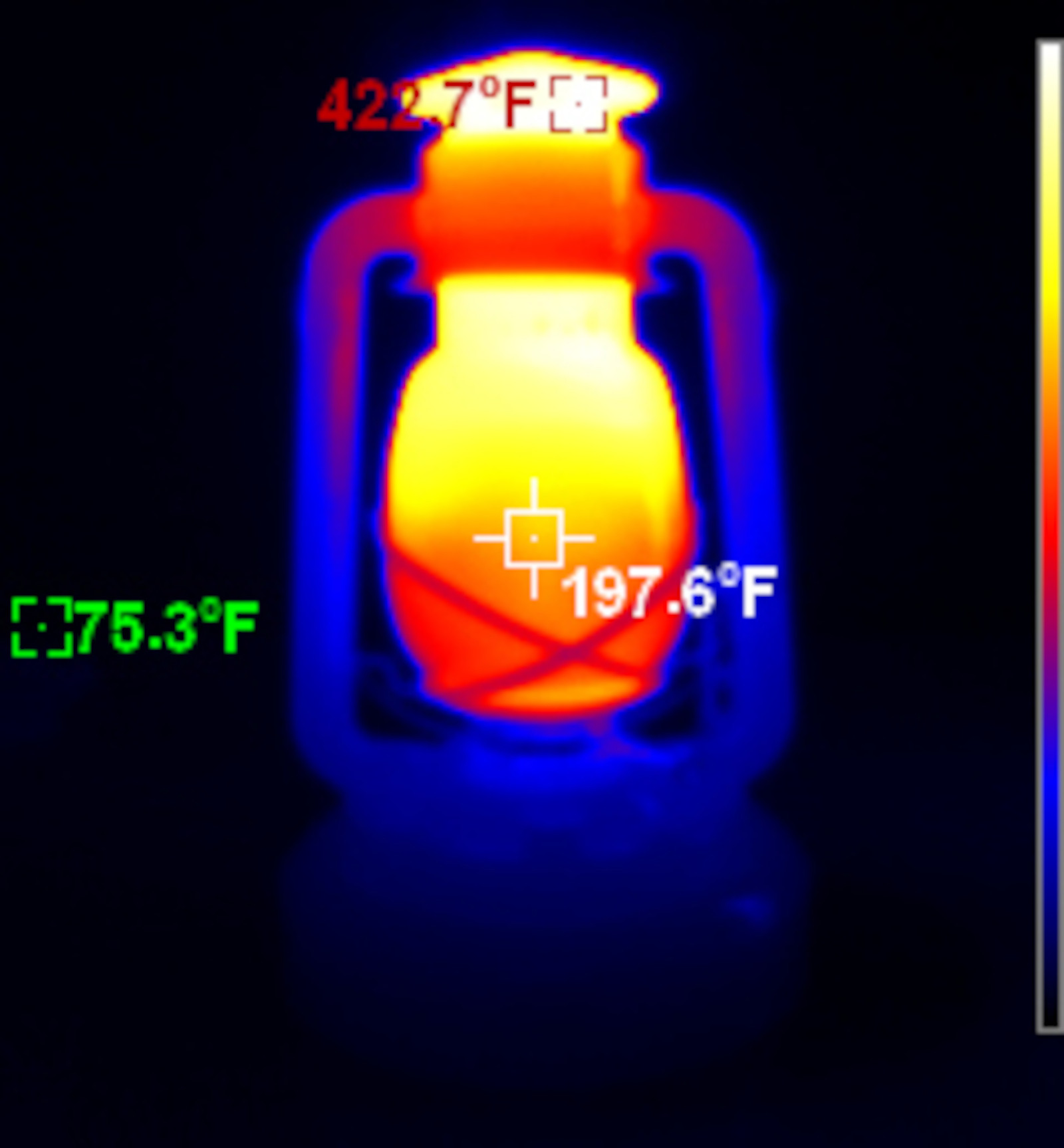
From above, I typically see around 400F. Under a normal flame, it tends to peak in the upper 300s - which, I’d note, is theoretically below the autoignition temperature of kerosene. No, I’m not about to drip kerosene on top of the lantern - but with a normal running temp in the upper 300s, neither should a tipped lantern directly ignite the spill.
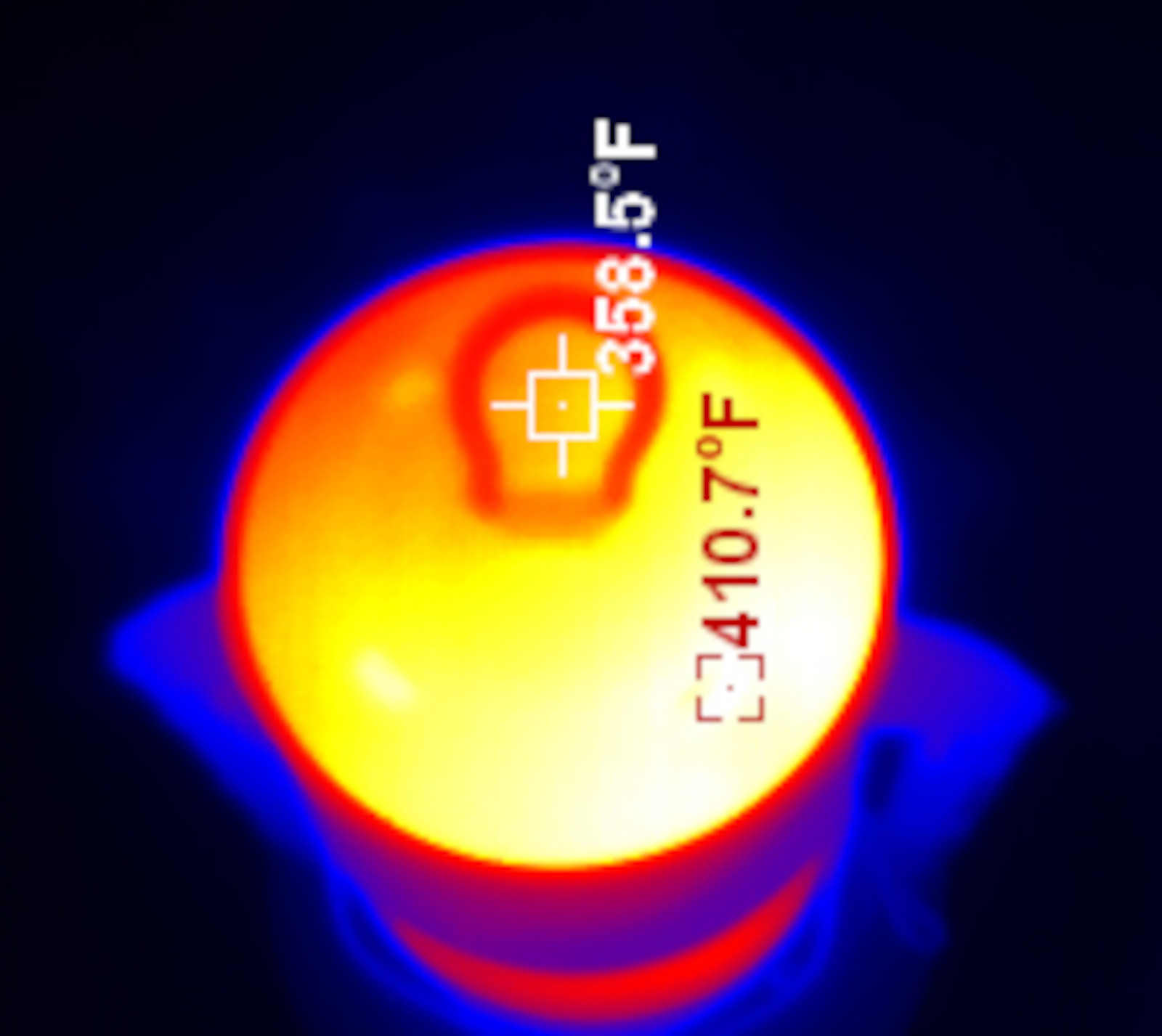
Despite burning more fuel, the Blizzard remains about the same temperatures as the Jupiter. I believe the hot spot here is a reflection off the flame in some form. Again, the tubes remain mostly cool in operation, with a bit of air preheating going on, but nothing that seems to survive the path down to the burner. Again, the fuel font remains quite cool, basically at ambient temperature.
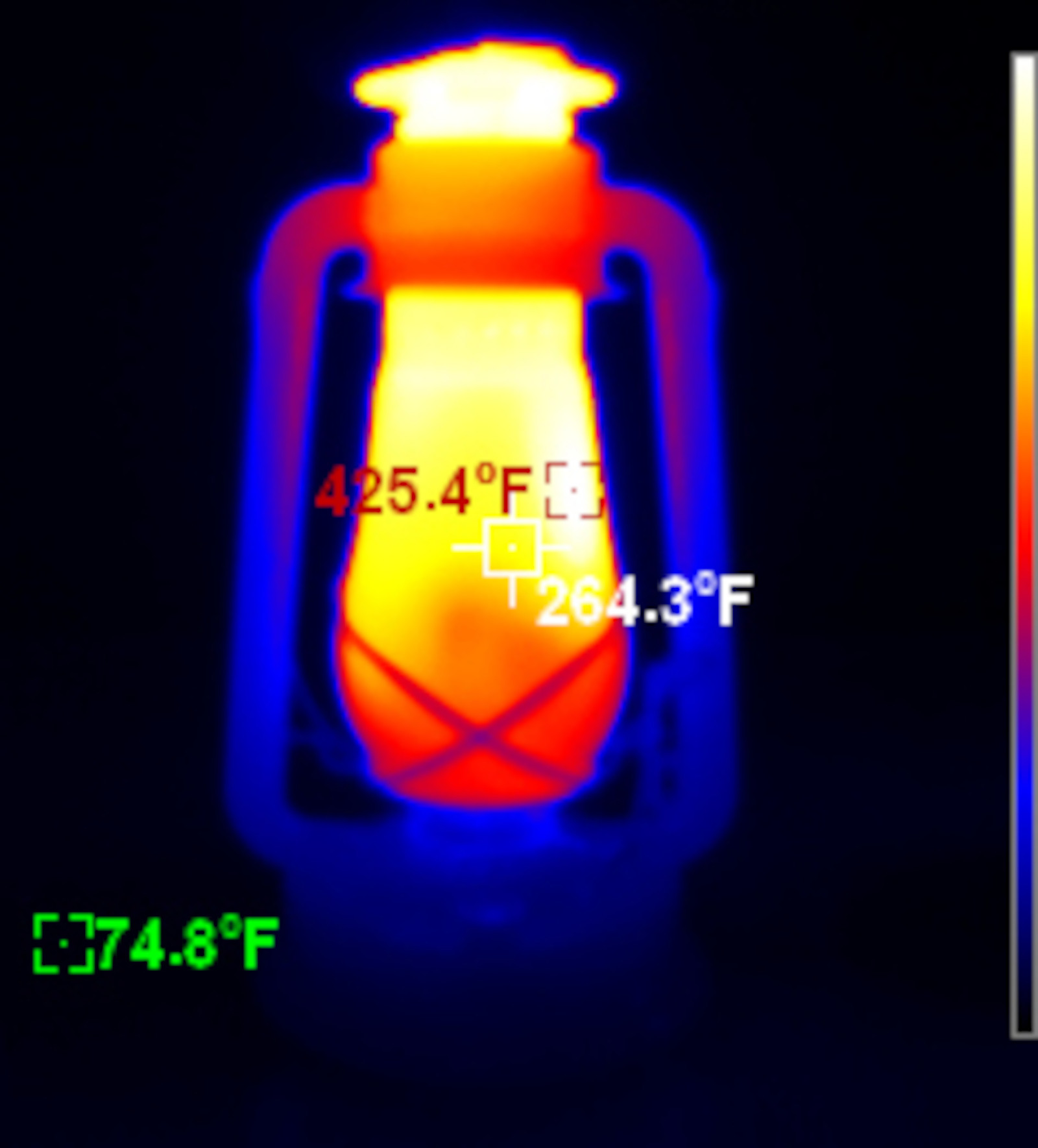
Similarly, the top of the Blizzard is in the low 400s for temperature.
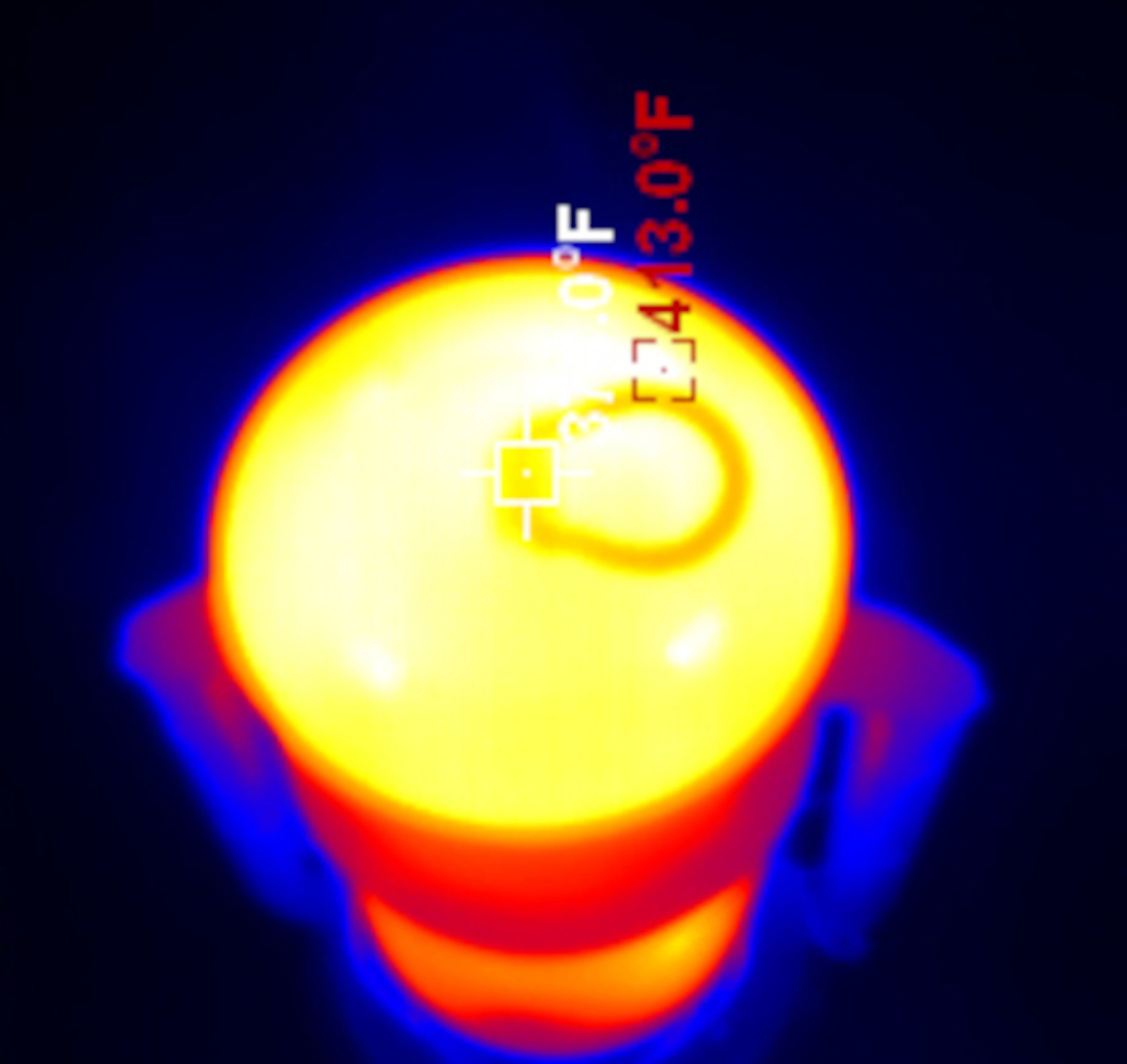
Remember how the Monarch is a hot blast lantern? You can see the impact of that here. The top of the tubes get quite hot - do not pick this lantern up by the top or it will leave a mark on you. But down below, the tubes are still quite cool to the touch and you can pick it up down there. The heat showing on the fill cap is a reflection - it’s quite shiny and is reflecting heat from above. Again, cold font.
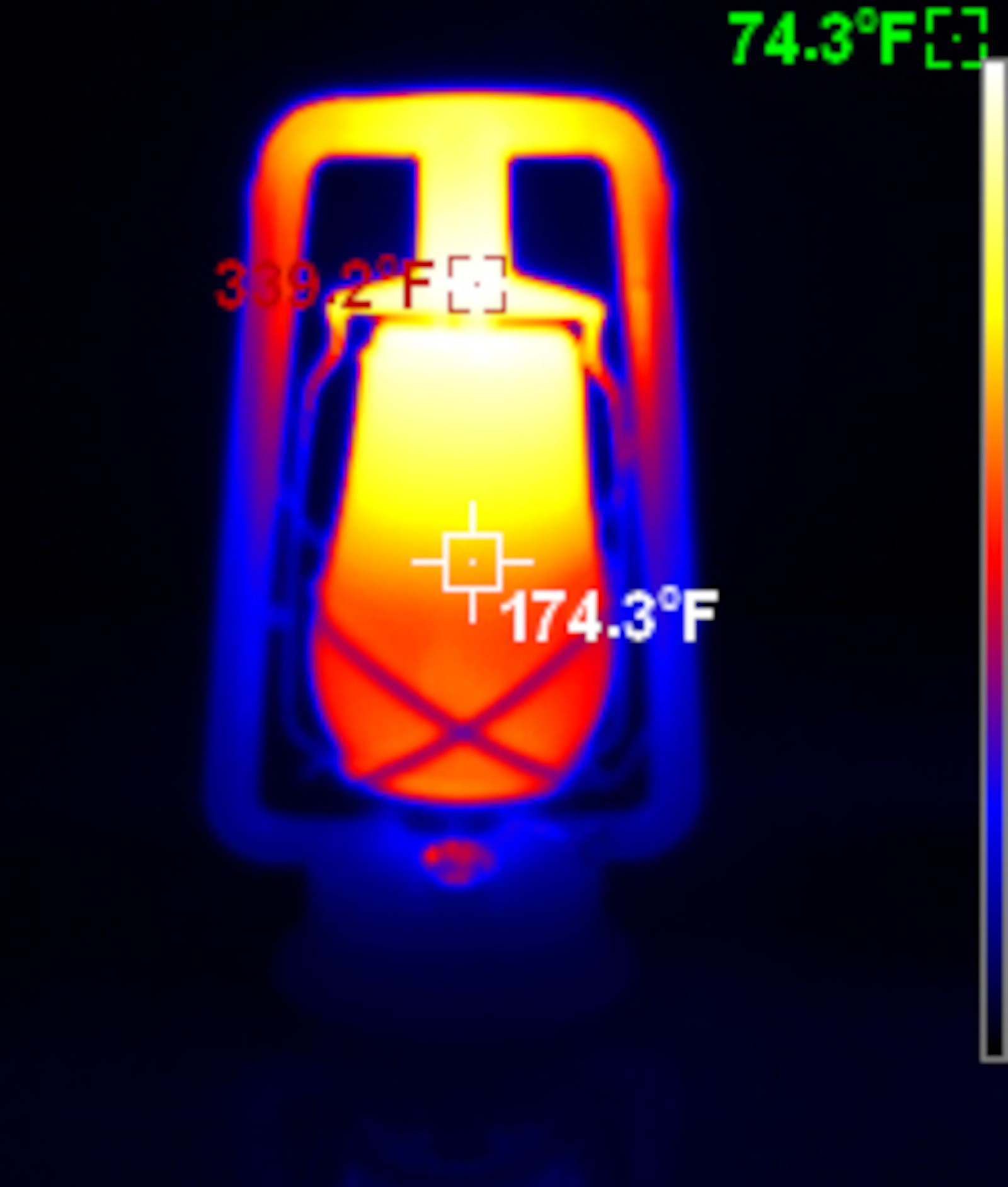
A characteristic of the hot blast lanterns, with their recirculating combustion products, is a cooler flame - and it shows here in the temperature at the top. Cranked up, the top of this lantern is 30-40 degrees cooler than the others, and it runs cooler yet at a normal flame height.
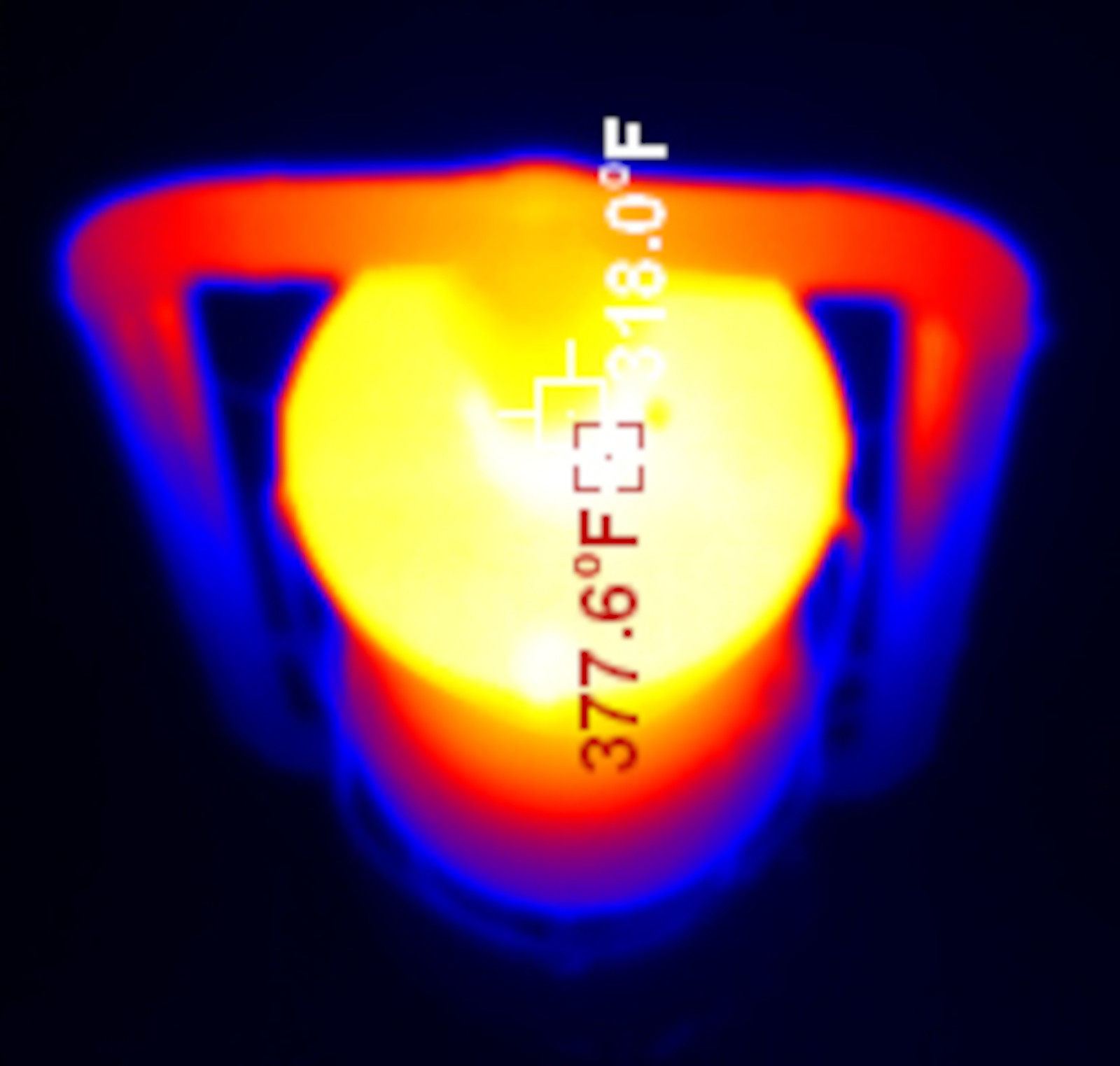
Finally, the Comet. There’s been some discussion about why the Comet will char the paint at the top of the chimney with a plastic smell and the other lanterns don’t. I’ll offer this as an answer: Because it runs 100F hotter than the rest, with what looks like cheaper paint. The top of this lantern is up at 520F under full flame - and the reasons are clear. The flame extends almost to the top of the globe with the Comet. But even on a small lantern, running flat out, the font remains cool.
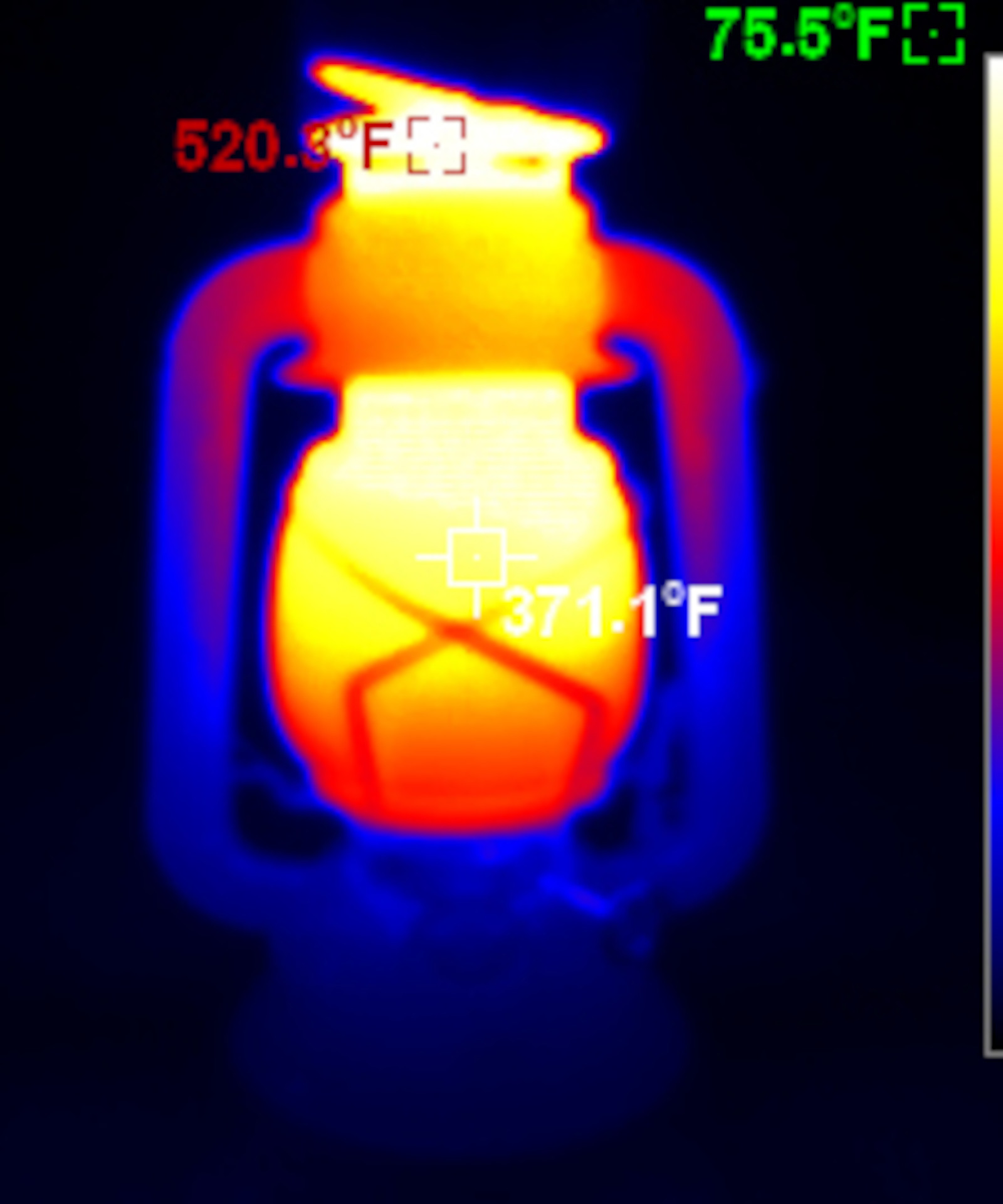
Yeah. It’s hot. I’m trying to like the Comet, I really am… it’s a cute little lantern. But I’m just not sure it’s worth picking up for someone over something larger, taller, and more competent. You can see the heat coming out the exhaust here - the blue haze coming off is from the exhaust gasses.
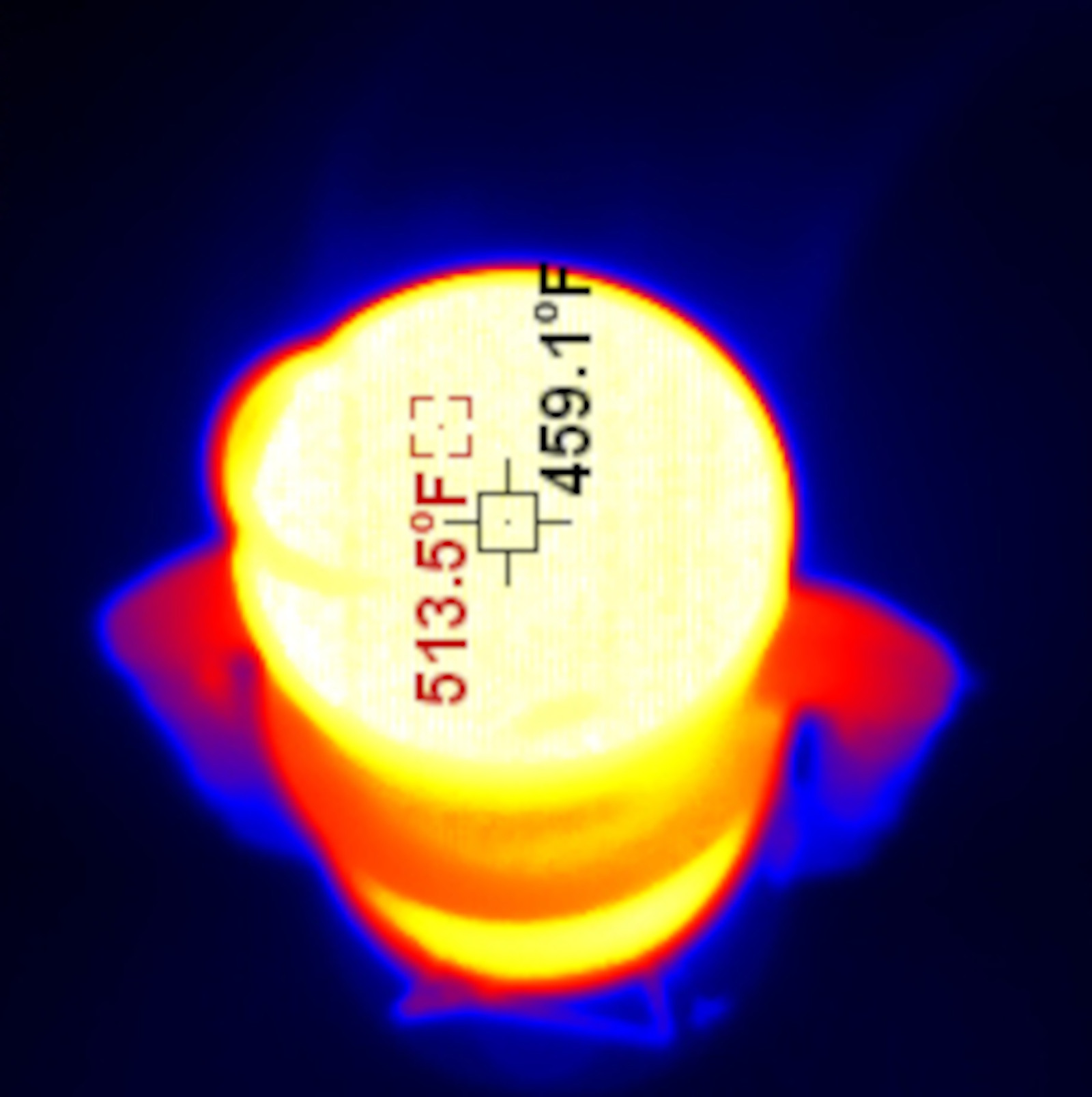
Fuel Safety
Finally, I’d like to talk a bit about fuel safety, and specifically how kerosene is different from some other fuels people are more familiar with. I regularly talk to people who are concerned about fire safety with kerosene lanterns, and the reality is that with kerosene (at least, a proper kerosene that meets the required specifications for the lantern), it’s very hard to make it misbehave. Not all “burny clear liquids” are alike in how they behave.
The key is the flash point of different liquids. Liquids will generate a vapor above them that increases with temperature, and the flash point is typically defined as the lowest temperature at which a liquid will generate enough vapor above it to briefly burn when subjected to a flame. The tests are a bit subjective, and different testing equipment will often generate slightly different results, but they’re a difference of a few degrees, not hundreds. So, where are the flash points of various liquids you might be familiar with?
Gasoline, which we’re all familiar with, has a flash point around -45F. If you’ve wondered why most cars simply won’t start without block heat below -40 or so, this is why - gasoline doesn’t generate combustible vapors below that point unless warmed up. Practically, this means that any gasoline spill will generate vapors that can ignite given a convenient ignition source.
Diesel is often regarded as a “safer fuel” than gasoline - and in the context of spills, this is absolutely correct. The flash point of diesel (depending on blend) is in the 100-130F range. A spill on really hot pavement might generate enough vapor to ignite, but most of the year, you can drop a match in a bucket of diesel without trouble.
Ever try to light a shot of alcohol? Pure thanol has a flash point of 63F, though at typical concentrations in alcohol you’ll have to get it a good bit hotter before it will hold a flame. You’ll find that 60 proof is around 85F - and that’s the flash point, not the flame point that will hold a flame.
Kerosene, similarly, has a flash point of greater than 100F. The MSDS for the Klean Strip 1K I typically use specifies “>100F”, but most kerosenes will be in the 140F range - which means that a spill simply won’t generate combustible vapors.
And Klean Heat, which I very much recommend for indoor use? The MSDS for Klean Heat specifies the flash point as 152.6F.
Yes, that means you can do something stupid like run a butane torch lighter over the top of a puddle of it without it igniting. You shouldn’t. But for science, at about 80 degrees out…
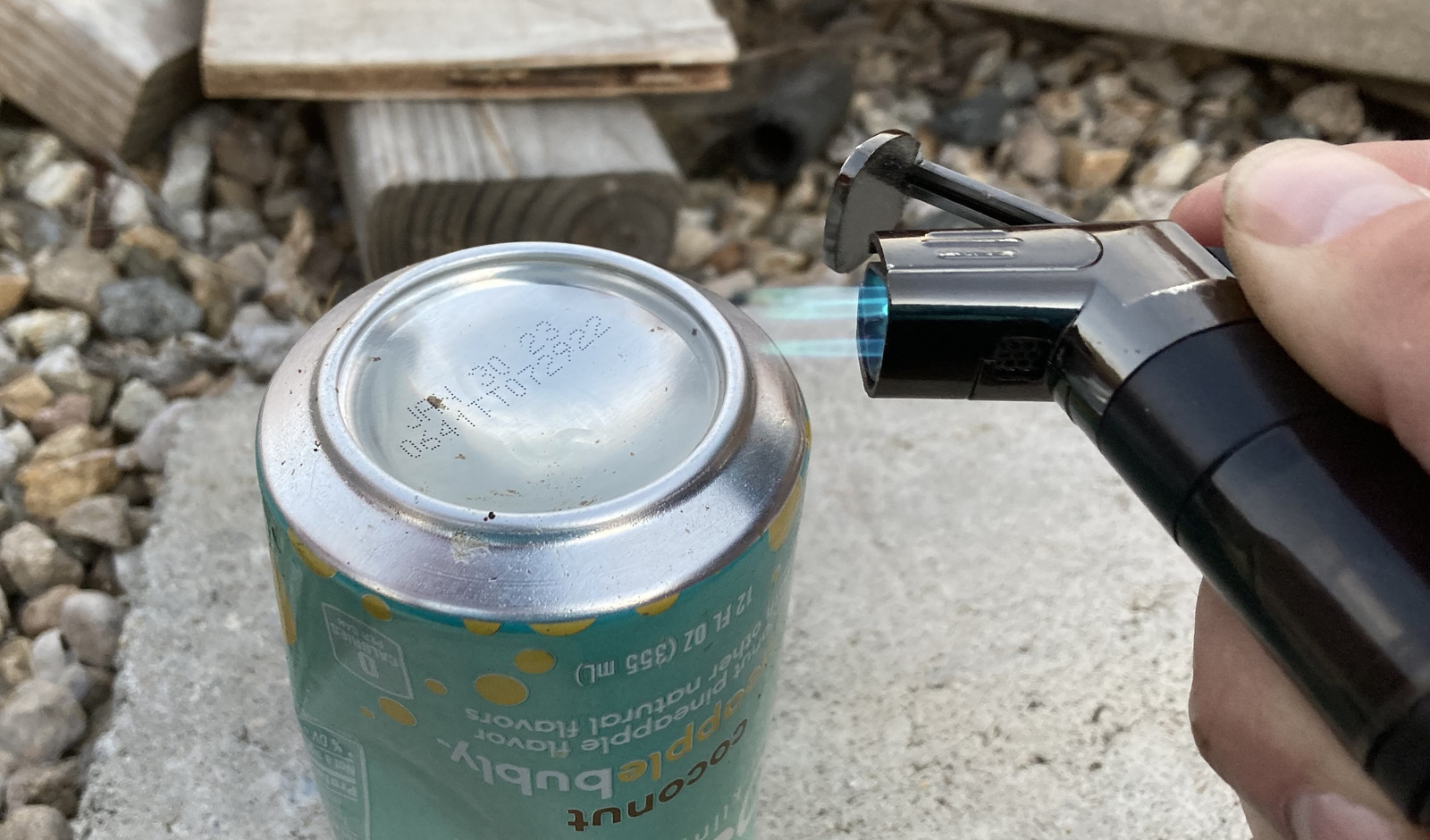
Yes, if you point the lighter at the pool of kerosene, it will heat the surface enough to ignite it and the pool will burn. But at any reasonable temperatures, kerosene just doesn’t produce ignitable vapors when spilled. Per some hazmat shipping requirements charts, it’s combustible - not flammable. It doesn’t even have to go as hazmat for UPS ground shipping! That doesn’t mean shipping Klean Heat to Canada is cheap, but… it’s doable. Ideally, you can find some options locally. This is my local Home Depot’s stock, and your local Tractor Supply or other farm stores might be a decent place to look too.
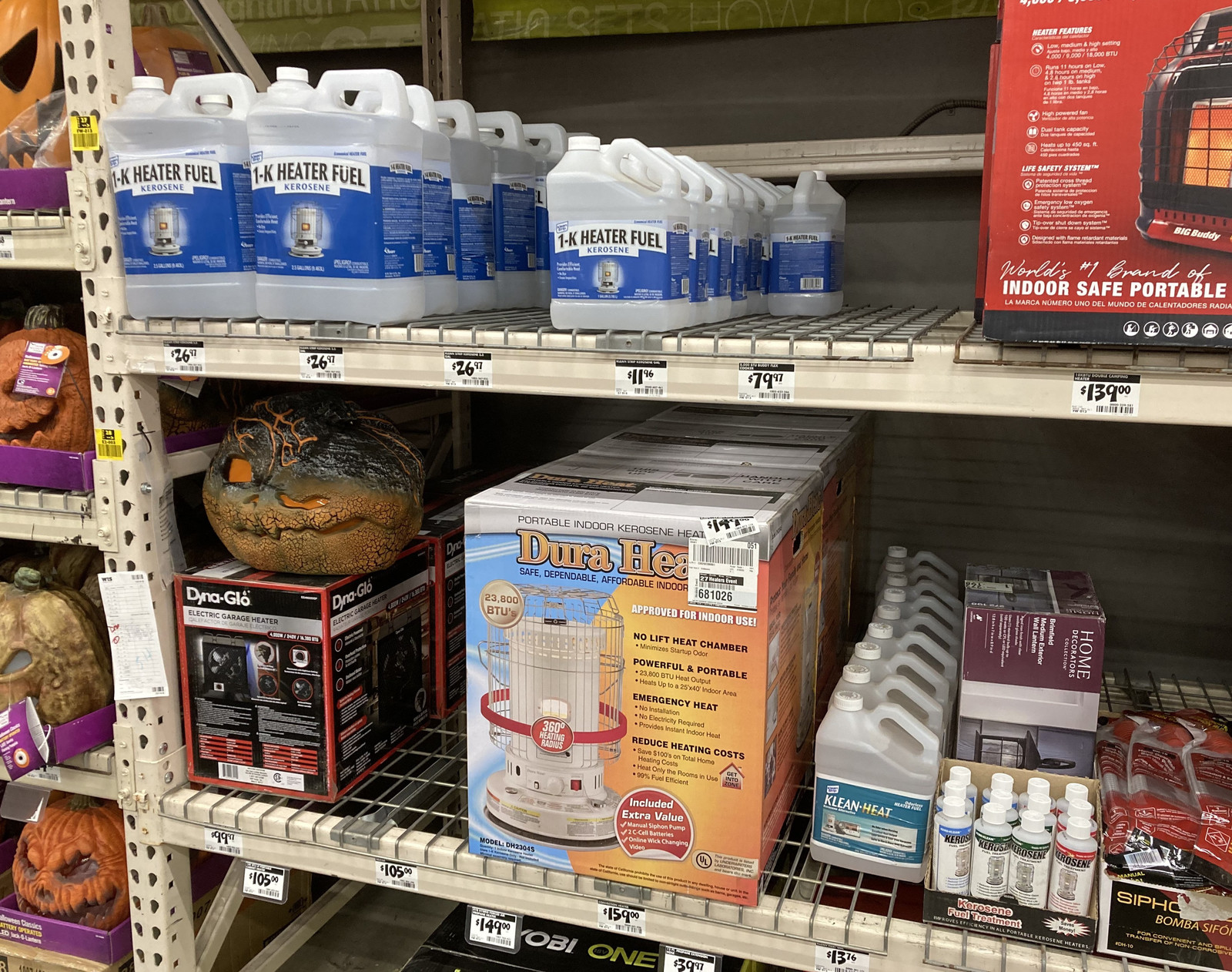
What About Ferrets?
Indeed. What about them? It’s been a bit since they’ve poked their ferrety noses into a post of mine.
Toby remains cute as ever.

Lucy continues being hard to photograph, with her nose in roughly everything she can find.

And Draco is just a big, fluffy, chonk of a ferret! He’s a big boy and keeps putting on more weight for winter!

Done with Kerosene Yet?
Not at all! I still have some kerosene heaters to tear down and write about!
